Show off all benefits & how it works
Real, genuine, relatable reviews
As close as they can get to touching your product
Show off your product in it's best possible light
Capture your product in realistic situations
Create a personal connection with your customers.

8 Insane (But True) Influencer Marketing Case Studies

2020 marks the start of a new decade, and influencer marketing is already making a name for itself in the Roaring Twenties. Our Instagram feeds are full of beautiful images promoting everything from lemonade to household cleaners.
But with all the hype, where’s the truth? How do you know influencer marketing ROI is realistic in such a crowded online space?
The thing is, 89% of marketers say their influencer marketing ROI is equal to or even better than their other channels.
Influencer campaigns are like marketing on steroids: not only go they put your brand in front of new audiences and boost your reputation, but they have a hard, measurable impact on your sales .
In other words: yes, influencer marketing is still effective. But if you want to drive your customers’ purchase decisions, you’ve got to do more than hire Kim Kardashian to sell diet pills. Influencer marketing is a tool, and like any other tool, you’ve got to wield it to get results.
Influencer marketing versus paid ads
But how does influencer marketing vary from other cool marketing tools, like Facebook Ads?
We love paid ads, but when ROI is on the line, influencer marketing is the way to go. The stats don’t lie:
- Influencer marketing is more influential than paid ads. 92% of consumers trust influencers more than ads , generating 11X the return on investment.
- Honestly, shoppers hate ads. 49% of your shoppers find paid ads annoying or irrelevant.
- Influencer marketing has a greater reach. 47% of your shoppers use ad blockers, but there’s no overlooking an influencer’s post on their social feed.
If you have the budget to do both influencer marketing and ads, we say go for it. But if it comes down to influencer marketing versus Facebook Ads, you’ll see more ROI with experienced influencers.
Still not sold? See how these 8 brands used influencer marketing to overcome sales hurdles, boosting their online presence and staking their claim in the world of eCommerce.
8 influencer campaign case studies that crushed it
Whether you’ve never tried influencer marketing before or if you’re stuck on how to create your next great campaign, don’t sweat it. Learn from the big brands that have come before you, taking the best pieces of their campaigns to refashion your own.
And if you need a little help persuading your boss to embrace influencer marketing, we’ve got just the remedy. Check out these 8 influencer marketing case studies to see how influencers affect the bottom line.
1 – Kettle + Fire

Kettle + Fire sells traditional, high-quality, grass-fed bone broths to health-conscious foodies. Voted one of the best Paleo brands by healthline.com, Kettle + Fire needed to deepen its brand reputation on social media.
But they were too busy handling the business side. Somebody had to cook all that bone broth, after all.
Kettle + Fire knew it needed help with social media marketing, but wasn’t sure how to make it happen. Doesn’t social media require a lot of work? A lot of content? Extra hands that they didn’t have? And how did influencer marketing fit in?
The Strategy
Kettle + Fire wanted to communicate the specific benefits of eating their product. They liked the idea of influencer marketing but wanted to keep the content curation on-brand.
That’s why they partnered with Trend. We made a list of targeted influencers who might be a good fit for Kettle + Fire’s bone broth products. After narrowing down the list, we selected influencers who could deliver the most powerful imagery.
The Results
A team of influencers followed Kettle + Fire’s brand requirements, creating dozens of beautiful, high-resolution Instagram posts for the brand.
Plus, Kettle + Fire used these curated images on their Facebook Ads to get more traction. In a two-birds-one-stone solution, Kettle + Fire got the beautiful imagery they always wanted, on top of a more effective Facebook Ads campaign.
The results were incredible. We tested their old creative against the new creative and found that Kettle + Fire earned $4 in revenue for every $1 spent in Facebook Ads.

If it comes down to influencer marketing versus Facebook Ads at your own business, Kettle + Fire shows it’s possible to succeed at both.
2 – Iceland Foods

Iceland Groceries may sound like a Nordic company, but it’s actually based in the UK. And this frozen food brand had a problem: its customer approval ratings had plunged to an abysmal 10%.
In the past, Iceland used big-name celebrities to promote its products, but these campaigns weren’t going well. They needed real influencer marketing ROI, stat.
Iceland realized the reason celebrity campaigns weren’t working is that they didn’t show real people. Iceland pivoted its campaigns to target everyday people, like mommy influencers.
Since customers are more likely to trust a micro-influencer over a celebrity, this proved to be a sneakily clever choice on Iceland’s part.
Iceland brainstormed a yearlong strategy where it partnered with regular-Joe food influencers to get some oh so good user-generated content .
On top of that, they implemented social listening and paid ads to really get the message out there. The goal of the campaign was to deepen customers’ bonds with Iceland products, with the ultimate goal to sell more frozen food.
Iceland had to make frozen food sexy and appealing, which was no small feat.
But during its partnership with 50 micro-influencers, Iceland hit the jackpot. By showcasing a diverse range of everyday people using their products, Iceland saw :
- A 55% retention rate on Facebook videos (and a 59% rate on YouTube).
- Their approval rating increase from 10% to a whopping 70%.

And if this doesn’t drive home Iceland’s influencer marketing case study, we don’t know what will:
This campaign was so effective that Iceland piggybacked on this success, targeting a new batch of micro-influencers with a second influencer marketing campaign, The Power Of Frozen.
3 – Warby Parker

Nobody wants to wear thick, granny glasses. Bespectacled people want reliable, fashionable, and affordable eyeglasses. Warby Parker entered the eyewear industry in 2010 to deliver just that.
Today Warby Parker delivers direct-to-consumer glasses with plenty of spunk . The brand is known not only for its superhero-level customer service, but its creative branding decisions.
Warby Parker is by no means a new name on the block, but they still wanted to push more product awareness and engagement on Instagram. They wanted influencer marketing ROI and took a micro-influencer approach to get it.
Warby Parker selected 7 micro-influencers with decently-sized followings on both Instagram and YouTube.
Their “Wearing Warby” influencer campaign partnered with influencers who already had an affinity to Warby.
In fact, all of Warby’s influencers had already posted about Warby organically before this campaign.
This ensured Warby partnered with influencers who were in it for the love of Warby (the cash was just a nice perk).
“Wearing Warby” showcased Warby glasses in everyday life. One influencer might be baking while wearing her Warby’s while another painted his latest masterpiece. By targeting influencers in creative industries, Warby not only expanded its audience, but pushed itself as a lifestyle brand.
Warby’s influencers showed off their specs by doing the crazy, fun, creative stuff they liked to do already. And Warby got crazy influencer marketing ROI from this campaign:

Warby Parker’s hot designer shades can’t protect your eyes from this blinding truth: influencer marketing is a must for product brands.
4 – Health-Ade

Los Angeles-based company Health-Ade makes small-batch, cold-pressed kombucha. Known for its funky flavors, emphasis on health, and a brazenly unique voice, Health-Ade still needed help penetrating the market.
Facebook Ads were way too expensive and risky for the growing brand, which wasn’t sure how to get in front of new shoppers.
The thing was, Health-Ade needed to focus on their kombucha mothers, not wooing real mothers to try their products. How do you crank out the high-quality, branded content followers expect when you don’t have the resources to make it happen?
Health-Ade reached out to Trend for help. Our team leveraged our database of vetted influencers to find people who could promote the Health-Ade name to their followers.
Health-Ade ended up partnering with several influencers, who created 214 Instagram posts for the brand. Best of all, each post was chock-full of repurpose-worthy content that Health-Ade could reuse on its site, social media, ads, and a lot more.
Thanks to their influencer campaign, Health-Ade now has brand-specific creative they can use everywhere.
But we know that alone won’t convince your boss that influencer marketing ROI is real.

Since it costs $7 to get 1,000 impressions on Instagram, we generated $11,200-worth of impressions for an eensy-weensy fraction of the cost.
If Health-Ade had hired a full-time employee to do this (at a cost of $42,000 a year, give or take), that would have been over $30,000 more expensive.
Case in point: influencer marketing gets you the content you need, the impressions you want, and the savings that make your boss salivate.

The other influencer marketing case studies on this list showcase human influencers—but as any Instagram user knows, influencers also come in different shapes, sizes, and species. Pet influencers have a lot of pull on social media.
For brands like Dyson , pet parents are a perfect target audience. Since expanding its product line to specifically address pet cleanup, Dyson has been working overtime to increase its reach in the pet space.
Dyson created an influencer marketing campaign on Instagram with the goal of pushing product awareness.
Few pet owners realized Dyson was a reliable solution, and the brand wanted to change that. It also wanted to boost its Instagram engagement.
Dyson partnered with 5 pet influencers on Instagram, largely targeting dog owners. The brand gave influencers a very loose creative brief, giving pet owners creative control over the posts themselves. The posts simply had to be humorous and show how pet owners cleaned up after their fuzzy companions.
What worked with this campaign was Dyson’s willingness to give creative control to influencers.
It also targeted influencers based not on their following size, but on their audience. One Dyson influencer had a following of just 2,500 people —but it had the highest engagement rate out of any other influencer in the campaign.
Dyson was pretty darn brave to give influencers so much control, but it paid off. Dyson saw influencer marketing ROI that included:

That’s ROI we can howl about.
6 – Kalumi Beauty

Beauty is a $49.2 billion industry worldwide . Kalumi Beauty knew it needed a piece of that pie, but there was a lot of competition for beauty mavens’ business.
Kalumi needed to promote its line of BEAUTYfood bars, but didn’t like how its branded messaging looked staged, Photoshopped, and tone deaf to its shoppers.
Today, beauty shoppers want to see real images of products in use, which meant Kalumi’s internal team couldn’t crack the code on organic, engaging content its audience would love.
Kalumi partnered with Trend to create content mapped to the entire buyer’s experience, from unboxing to product use. The brand wanted to create a repository of trustworthy, unfiltered content to share with its audience.
Trend helped Kalumi locate real product users and influencers. This way, the beauty brand was able to tell more authentic stories that would resonate with shoppers.
Trend’s team of content creators shot every piece of content, not only sharing the rights with Kalumi Beauty, but publicizing that content with their followers for even more traction.
If Kalumi had used in-house influencers, they would have spent upwards of $50,000 a year to manage the entire affair. A content studio would have run them $72,000 a year, and an agency would have been over $100,000.
Thankfully, Kalumi didn’t have to sign away their kidneys to do influencer marketing right.
They spent just $6,715 on their Trend campaign, garnering results like:

Who says beauty marketing has to be cutthroat? With Trend, Kalumi was able to make influencer marketing work while building a library of effective user-generated content.
7 – Palms To Pines

Palms to Pines is a social media management and strategy firm. The brand knew that influencer marketing and user-generated content would be a great fit for its client, KÖE Organic Kombucha .
Palms To Pines was hard at work helping KÖE launch with a key retailer. Problem was, there was little to no local recognition of the KÖE brand.
They had the genius idea of increasing local awareness with influencers, encouraging shoppers to go in-store to try KÖE’s kombucha. But to do that, Palms to Pines needed to source a lot of social media content from influencers—something that was a huge headache before Trend.
Pre-Trend, Palms To Pines had to spend weeks planning and executing just one campaign. And when they tried to get agencies involved? It was a nightmare, both for their wallet and email inbox.
Palms To Pines used Trend’s structured platform to connect with experienced content creators and influencers, using these steps:
- Step 1: The firm built its campaign out in Trend’s builder, requesting certain content styles, hashtags, and specifications.
- Step 2: Palm To Pine’s campaign went live and the applications started rolling in! They didn’t have to search for influencers at all—they got their pick of the litter with Trend.
- Step 3: After selecting a group of vetted pre-vetted influencers, Palm To Pines sent KÖE’s kombucha to the content creators. Trend took care of the addresses and shipping, which was a big time-saver.
- Step 4: Creators sent in their content, generating an immense library of licensed content for Palms To Pines.
Palms To Pines’ influencers had tremendous success with their first campaign. In one month, the brand was able to generate:

As a result, Palms To Pines significantly decreased hands-on time managing KÖE’s campaign, garnering not only a library of amazing content, but a trusted group of influencers to promote the brand with their followers.
8 – MOON Ultra

Taking your selfie game from weak to fleek requires awesome lighting. That’s why the folks at MOON Ultra created the Moon UltraLight, a mobile light accessory that connects to your smartphone.
They knew their product was a hit, but there was a problem: nobody knew about the product launch.
Plus, even if MOON Ultra managed to get the word out, there was no guarantee that shoppers would trust them enough to actually buy a Moon UltraLight.
That’s why MOON Ultra partnered with Trend. It needed social proof, stat, and our network of pre-vetted influencers was able to create some much-needed authentic content.
MOON Ultra partnered with Trend to make a splash on the market. We knew they needed a lot of horsepower, so our system matched the brand with trustworthy influencers who already had large followings.
(Oh, and the structure of our platform helped MOON Ultra keep costs low, too, by the way.)
With Trend, MOON Ultra completed its influencer campaign in a few short weeks, generating tons of high-quality content to use for its launch.
If MOON Ultra tried to source influencers itself, it would have spent over $100,000. But with Trend, the brand spent only $3,870 and got amazing results:

Instead of pumping money into something like Facebook Ads, MOON Ultra preserved its budget, generated a library chock-full of user-generated content, and put itself in front of thousands of potential customers.
Yes, influencer marketing has reached a fever-pitch in 2020. But just because something is popular doesn’t mean it won’t work for your brand. Au contraire , these 8 brands got influencer marketing ROI so insane we did a double-take at the numbers.
It’s time to try something different. Let’s make your next influencer marketing campaign a hands-free haven of ROI. Sign up for a free Trend account now to see how partnering with trusted trendsetters means more money in your pocket.

Trend is joining forces with soona. Learn what this means for the range of content you can now generate for your brand.

Press ESC to close

Influencer Marketing Case Studies: 4 Brands That Turned Social Media Into Gold
In today's digital landscape influencer marketing has become the not-so-secret weapon for brands looking to make a splash. From TikTok sensations to Instagram moguls these social media stars have transformed how companies connect with their target audiences.
Success stories in influencer marketing read like modern-day fairy tales where a single post can turn products into overnight sensations. Think of the time when a little-known skincare brand partnered with a beauty influencer and saw their sales skyrocket by 500% in just 48 hours. Or when a fitness influencer's honest review of workout gear led to a waitlist longer than a CrossFit enthusiast's meal prep routine.
These case studies aren't just feel-good stories – they're powerful blueprints for marketing success. They reveal the strategies tactics and lessons learned from both triumph and failure in the ever-evolving world of influencer partnerships.
Article Contents
Influencer Marketing Case Studies
Authentic content alignment creates the foundation for successful influencer partnerships. Influencers who genuinely use the products generate 3x more engagement than those who create purely promotional content.
Clear Campaign Objectives
Setting specific measurable goals drives campaign success:
- Generate brand awareness through reach metrics
- Increase engagement via likes comments shares
- Drive direct sales using trackable links
- Build email lists with targeted lead magnets
- Boost website traffic through referral tracking
Audience Match Optimization
Strategic audience alignment maximizes campaign impact:
- Demographics match target customer profiles
- Interests align with brand values
- Location matches service areas
- Language resonates with target market
- Engagement rates exceed industry benchmarks
Content Quality Standards
High-performing influencer content includes:
- Professional photography video production
- Authentic storytelling elements
- Mobile-optimized formatting
- Platform-specific best practices
- Clear calls-to-action
Performance Tracking
Key metrics for measuring campaign effectiveness:
- Disclosure of sponsored content
- FTC partnership guidelines
- Platform-specific requirements
- Brand safety protocols
- Content approval processes
Nike's Instagram Campaign With Micro-Athletes
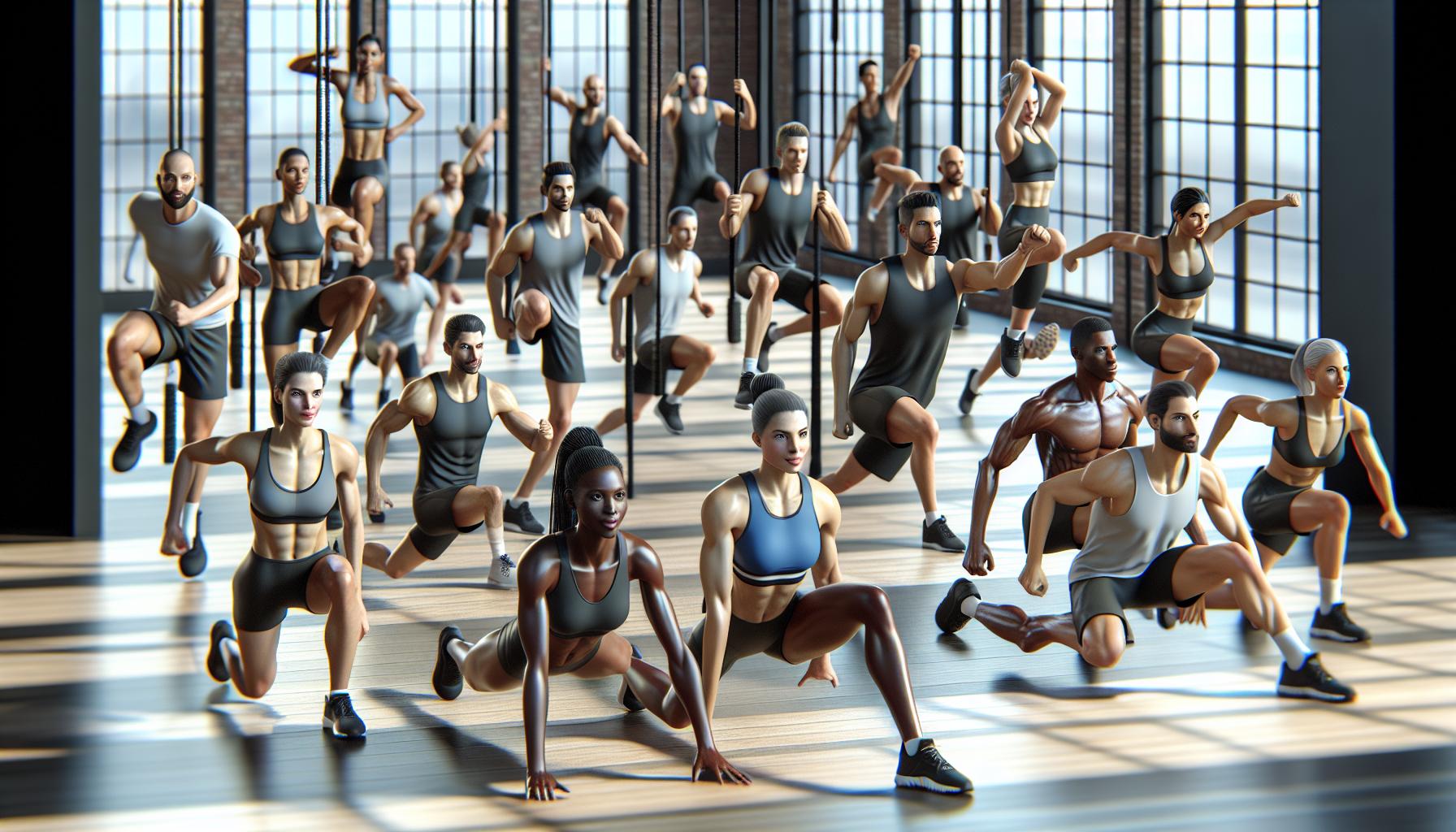
Nike's Instagram micro-athlete campaign transformed amateur sports influencers into brand advocates, generating 4x higher engagement rates than traditional celebrity endorsements. The campaign focused on relatable athletes with follower counts between 1,000 and 100,000 to create authentic content around their training routines.
Performance Metrics and ROI
The campaign achieved remarkable results across multiple metrics:
These micro-athletes generated 78% more comments compared to macro-influencers in previous campaigns. The authenticity drove a 34% increase in click-through rates to Nike's product pages while maintaining a 60% lower cost per acquisition than traditional advertising channels.
- Content Authenticity
- Real training footage from daily routines
- Unscripted testimonials about Nike products
- Behind-the-scenes gym moments
- Strategic Influencer Selection
- Athletes from diverse sports categories
- Strong local community engagement
- Consistent posting schedules
- Previous organic Nike product usage
- Platform-Optimized Content
- Instagram Stories highlighting product features
- Reels showcasing workout sequences
- Carousel posts displaying product versatility
- Interactive polls driving audience participation
Daniel Wellington's Strategy With Nano-Influencers
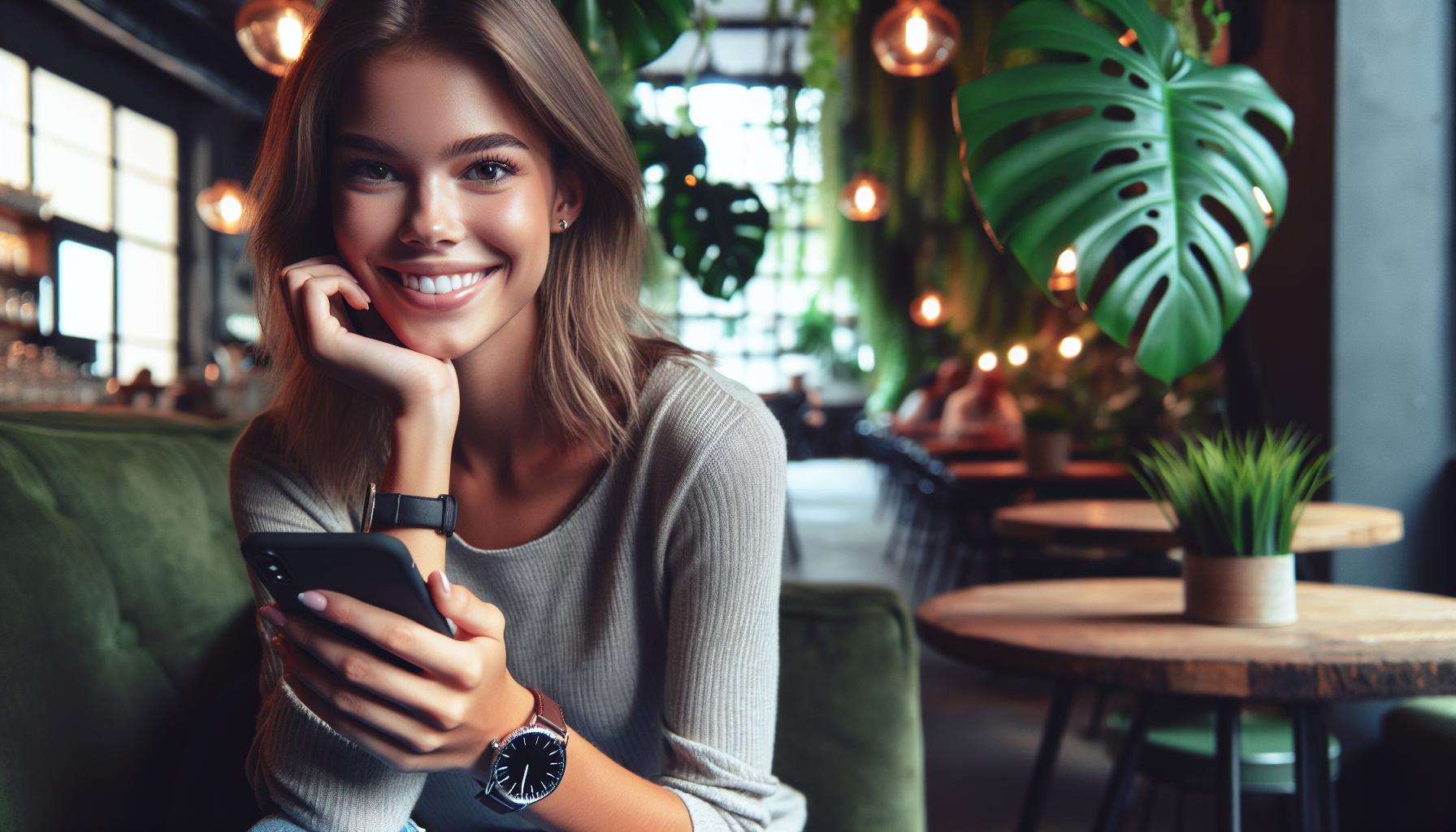
Daniel Wellington revolutionized their marketing approach by partnering with nano-influencers, creating authentic connections with targeted audience segments. This strategy transformed their social media presence across Instagram, focusing on micro-communities rather than mass appeal.
Cost-Effective Reach
Daniel Wellington's nano-influencer program generated a 4X higher ROI compared to traditional influencer campaigns. The brand collaborated with 2,800 nano-influencers, each having 1,000 to 5,000 followers, spending an average of $200 per partnership. These partnerships resulted in:
- 7.2% engagement rate across posted content
- 850,000 collective impressions per month
- 35% reduction in customer acquisition costs
- $4.50 cost per thousand impressions (CPM)
Brand Authenticity Results
The nano-influencer strategy delivered measurable authenticity metrics that surpassed industry standards:
- 89% of user comments expressed genuine interest in product features
- 6.3X higher comment-to-like ratio than macro-influencer posts
- 78% of nano-influencer content received organic shares
- 44% increase in positive brand sentiment scores
The campaign's success stemmed from authentic product integration into daily lifestyle content. Nano-influencers created 12,000 unique pieces of content, generating a 67% higher trust score compared to celebrity endorsements. Their posts achieved a 23% click-through rate to Daniel Wellington's e-commerce platform.
Glossier's Customer-to-Influencer Marketing Model
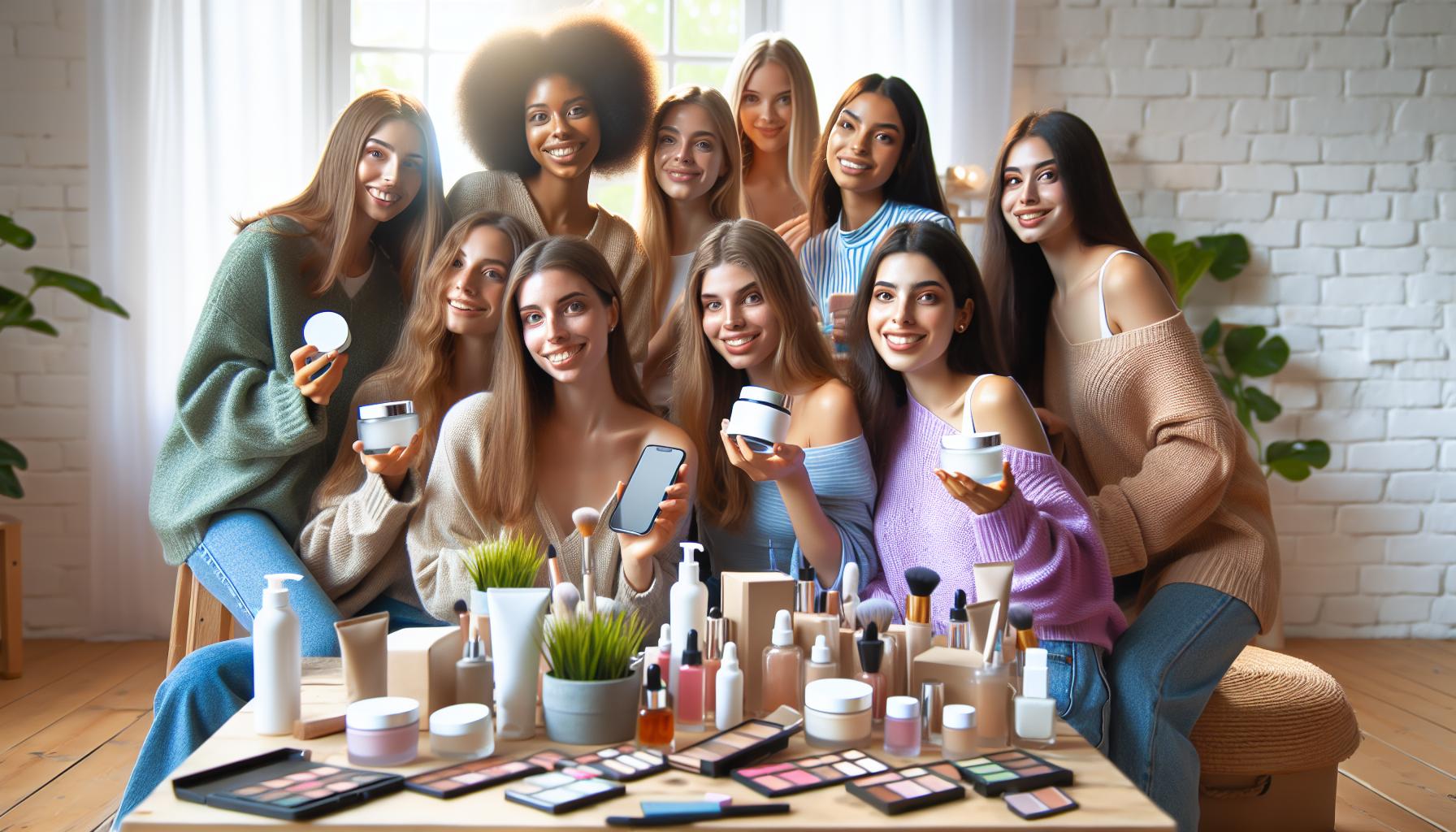
Glossier revolutionized beauty marketing by turning customers into brand advocates through user-generated content. The brand's strategy focuses on authentic representation creating a community-driven approach to product promotion.
Community Building Approach
Glossier cultivates brand loyalty through their “Phase 1” set program, engaging 100+ micro-influencers who started as customers. These brand ambassadors create authentic content showcasing their daily beauty routines featuring Glossier products. The brand's Instagram engagement rates average 7.5% compared to the industry standard of 3%. Their #glossierinthewild hashtag has generated over 500,000 posts from genuine customers sharing personal experiences. The company leverages these organic testimonials across their marketing channels creating a continuous feedback loop between customers influencers.
Sales Impact Analysis
The customer-to-influencer strategy generated measurable results across key performance indicators:
The brand's micro-influencer collaborations drove 70% of online sales through direct referrals. Their user-generated content campaigns achieved a 93% engagement rate across social platforms leading to an 85% increase in website traffic.
Dunkin' Donuts TikTok Challenge Success
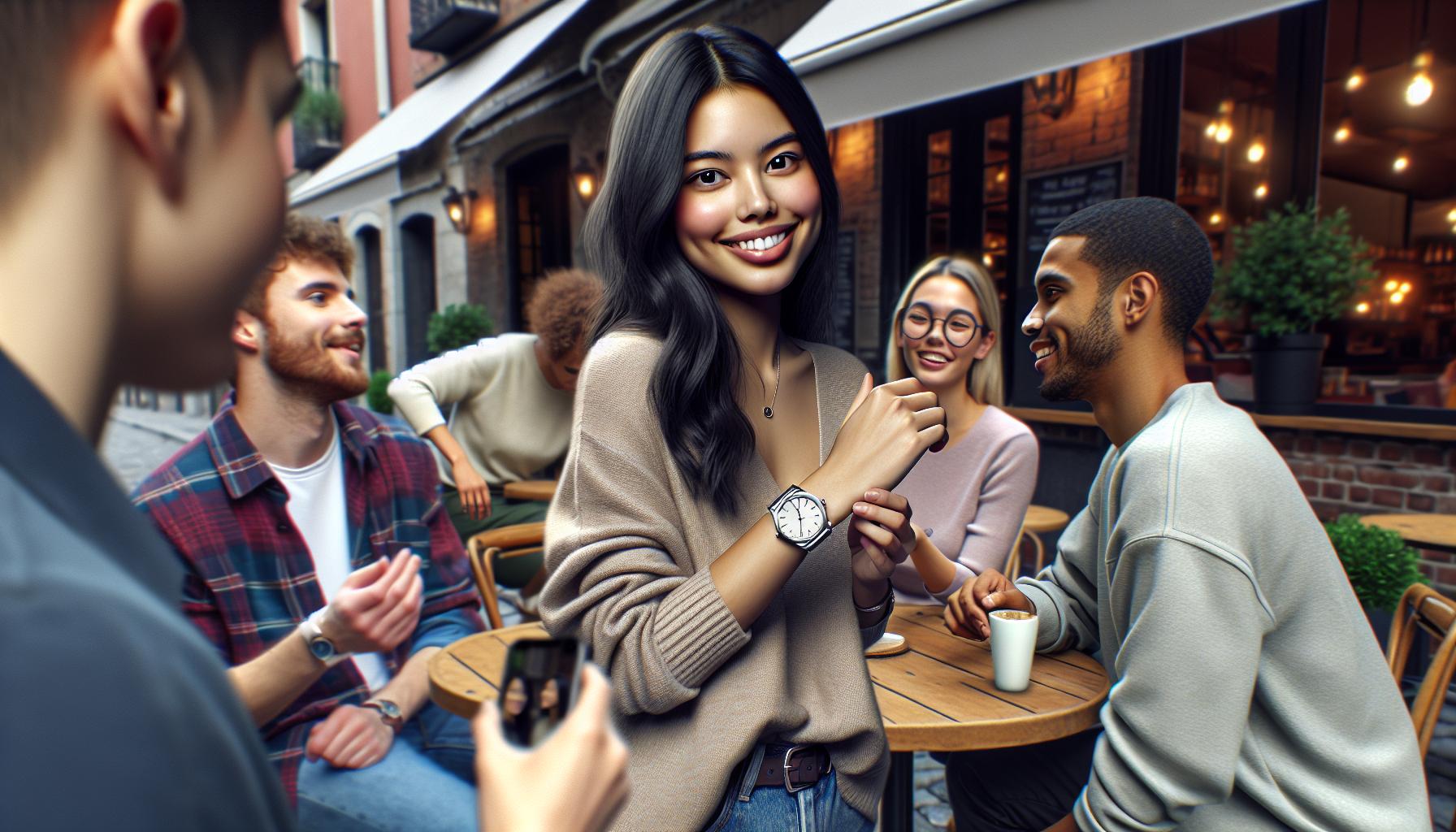
Campaign Virality Breakdown
The #DunkinDance challenge featured eight prominent TikTok creators, including Charli D'Amelio who boasts 150 million followers. Each creator performed unique dance routines while holding Dunkin' signature cold brew drinks. The campaign expanded organically as users recreated these dances, adding personal touches to showcase their favorite Dunkin' beverages. The branded hashtag generated 5.5 billion views on TikTok. Creators incorporated Dunkin's custom music track into their videos, resulting in 6.7 million user-generated videos within three months.
The campaign's engagement metrics exceeded industry benchmarks across all key performance indicators. TikTok users spent an average of 4.5 minutes interacting with challenge content. The branded hashtag sparked 3.6 million brand mentions across social platforms. Store visits increased 45% among Gen Z consumers during the campaign period. Cold brew sales rose 57% compared to pre-campaign figures.
Best Practices From Leading Brand Cases
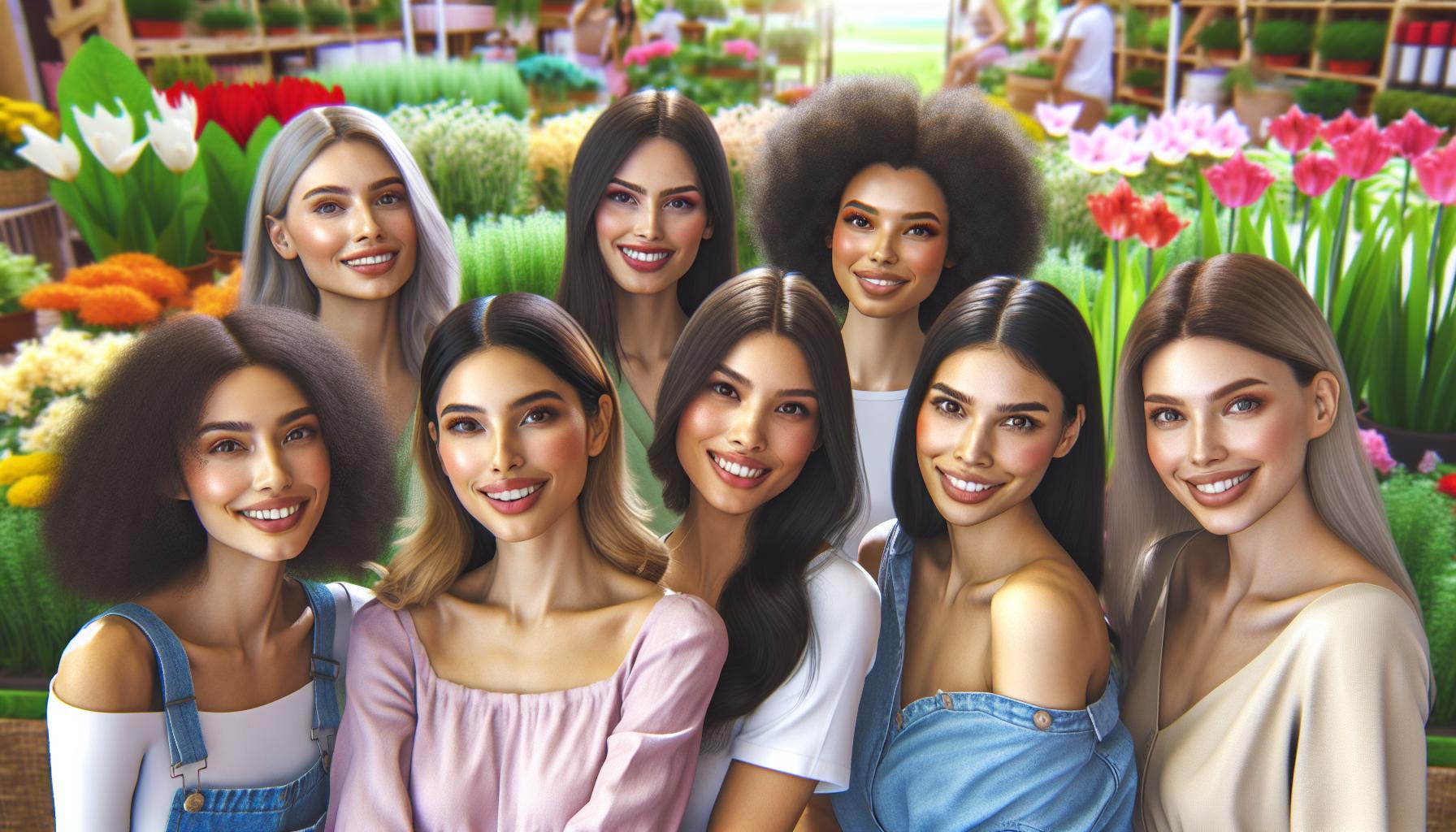
Key practices from successful campaigns include:
- Identify influencers based on audience alignment rather than follower count, following Daniel Wellington's nano-influencer approach that delivered 4X higher ROI
- Create platform-specific content formats optimized for each social network, similar to Dunkin's TikTok-native #DunkinDance challenge reaching 5.5 billion views
- Enable authentic storytelling by giving influencers creative freedom, like Glossier's customer-turned-advocate program generating 7.5% engagement rates
- Track multiple performance metrics beyond basic engagement, measuring impact through sales lift, brand mentions, website traffic
Performance benchmarks from leading cases demonstrate:
Content integration strategies focus on:
- Incorporating products naturally into lifestyle content, achieving 6.3X higher comment-to-like ratios
- Building long-term partnerships over one-off posts, resulting in 75% increased repeat purchase rates
- Leveraging user-generated content through branded hashtags, generating 500,000+ organic posts
- Creating platform-specific challenges that encourage audience participation, driving 6.7 million user submissions
These practices emphasize authentic engagement over promotional messaging, community building over reach metrics, consistent tracking of multiple KPIs.
What Makes an Effective Influencer Marketing Campaign
These case studies demonstrate the transformative power of influencer marketing when executed strategically. From Nike's micro-athlete partnerships to Glossier's customer-to-influencer approach brands have achieved remarkable results through authentic collaborations and community engagement.
The success metrics across these campaigns reveal a clear pattern: authentic content paired with the right influencer partnerships drives higher engagement rates lower acquisition costs and stronger brand loyalty. Whether working with nano-influencers like Daniel Wellington or leveraging platform-specific campaigns like Dunkin' Donuts on TikTok the key lies in creating genuine connections with target audiences.
These real-world examples prove that influencer marketing isn't just a trend—it's an essential component of modern digital marketing that delivers measurable business impact when implemented thoughtfully and strategically.
Related Posts
- 50 Top Female Fitness Influencers You Need to Follow
- Exploring the Top TikTok Influencers: Icons of the Short-Form Content World
- Digital Innovator: How They’re Revolutionizing Our Everyday Experiences Right Now
- 5 Reasons Why Personal Branding is Important: Unlock Your Career Potential Today
- Influencer Marketing Trends: What to Expect in 2024
- How to Become a LinkedIn Influencer?
- How Many Views on Instagram Reels to Get Paid?
- 10 Tennis Influencers to Follow on Instagram in 2024
Share Article:
Influencer marketing ai: 5 game-changing ways it’s revolutionizing brand partnerships, rebranding yourself: unlock new opportunities and transform your personal image today, leave a reply.
Save my name, email, and website in this browser for the next time I comment.
Please enter an answer in digits: three × three =

- Schedule Strategy Call
Some Killer Influencer Marketing Case Studies
Interested in adding influencer marketing to your campaign? We know a thing or two about working with awesome influencers who know how to get your target audience to pay attention.
From TikTok users to content creators on Instagram and other popular social platforms, we have dozens of influencer marketing campaign case studies to share and show just how visually exciting and successful our influencer strategies can be.
Best Influencer Marketing Case Studies of The Last Few Years
Over the course of a decade-ish in the influencer marketing industry, we have built and managed campaigns across an INSANE (and impressive) range of verticals.
Whatever kind of influencer campaign you’re looking to run – and even if you have no idea what kind of campaign you want – we can come up with creative concepts, bring in the right influencers, and build a campaign that hits all the important KPIs.
Our client list includes some of the biggest names in any industry – Beauty 💄, Fashion 👗, Construction 🚧, Real Estate 🏠, Toiletries 🚿, Apps 📱, Precious Gems 💎, Ecomm 🖥, Telecom ☎︎, Housewares 🍽, Food 🥑, Nonprofits ❤️, Outdoors 🌳, Weddings 👰🏽, Fertility 👶🏾, Parenting 👨👩👧, Haircare 💇🏼♀️, Automotive 🚙, Environment 🌍, Health 🏃🏾♂️… you name it.
Here are some of our favorite influencer marketing case study examples:

Savers Value Village
Turning secondhand shopping into a movement that’s stylish, sustainable, and unforgettable.
Impressions
Pieces of Content

ROAR Organic
Bold hydration meets vibrant, quirky creativity.
Video Views
Engagements

Peelz Citrus
Peelz made mandarins bold, fresh, and unforgettable. 🍊

Influencer marketing played a key role in Lenox’s big rebranding push

St Pierre Bakery
We enlisted influencers who we knew could create drool-worthy pics and video content.

The Honest Company
We found 30 influencers that fit their brand story and generated content that looked like Honest produced it themselves.

We got 1,493,630 ORGANIC video views! (Is there a taking-a-bow emoji we can use here?)

Due to product requirements, we targeted influencers with niche photography skills and the content literally lit up Instagram.

A complex campaign that yielded a Bachelor-style live show (which our account managers fully produced).

Famous Footwear (Pandemic Shopping)
We highlighted in-store shopping during a pandemic so that people could see how safely they could shop.

This campaign was designed to capture the beauty, the thrill, and quirks of a group of 37 outdoor adventure influencers.

Popular Business Directory
The campaign, slated to kick off during Black History Month, positioned our client in helping Black-owned businesses.

These campaigns celebrated strong,confident women that shared personal stories sparked genuine conversations across social channels.

Sweet Defeat
We had influencers do the “Sweet Defeat Challenge” – the reactions on influencers’ faces alone convinced audiences that this product works.

We rolled out a campaign to generate excitement and awareness around the brand’s summer and holiday releases and the 2018 tour.

American Standard
This campaign set out to show what a difference American Standard can make in your often-neglected bathroom.

Earthjustice
We raised awareness about the importance of intersectionality within the environmental justice movement.
Potential Reach

Essense of Australia
We found influencers for this campaign that were diverse in just about every way – race, body shape, personal style, and lifestyle.

Feit Electric
For this campaign, we worked with home decor, lifestyle, and DIY influencers to create brand awareness and drive traffic to Feit’s landing pages.

Greenvelope
We found 8 outstanding fiancés to share their stories and nudge other betrothed followers toward considering Greenvelope for their wedding.

The Smile Generation
We generated brand awareness and hype about the Smile Generation services, while driving families to use their remaining benefits before the end of 2019

RefrigiWear
We found 24 US influencers to post on Instagram and their blogs, showcasing RefrigiWear as THE brand to keep workers warm while doing their jobs

We launched a year-long brand ambassadorship program to promote five different strollers set to launch throughout the year.

Our campaigns showcased the product creatively to different audiences – and they agreed on one thing: what their favorite body care brand is!

Susan G. Komen
We’ve run four campaigns for Susan G. Komen, to keep both their mission and breast cancer survivors top-of-mind.

Famous Footwear (Global)
This case study highlights 6 campaigns that we really enjoyed amongst the dozens that we’ve run for them.
Influencers

Influencing The Curve
The Shelf team created the #InfluencingTheCurve campaign to build an army of influencers committed to spreading the truth
Total Reach
And with these successes, we hope we were able to convince you that The Shelf is the influencer marketing agency to partner with!
Schedule a Strategy Call Today
Ready to get your influencer marketing campaign locked down?

Bold ideas. Cultural relevance. Data-first strategies.
Get tactical tips deliver to your inbox every other week
- Subscribe Today
The Shelf | 2055 Piedmont Rd NE, Atlanta 30324 | © 2012-2024 Shelf, Inc
- User Acquisition
- App Store Optimization
- App Engagement
- App Revenue
- App Leaders
- AI Marketing
- Growth Marketing
- Mobile Marketing
- Mobile Game Marketing
- Performance Marketing
- Apple Search Ads
- Customer Engagement
- Marketing Automation
- In-app Messaging
- iOS Push Notifications
- Android Push Notifications
- SMS Marketing
- Mobile Attribution
- Mobile Measurement Partners
- Crash Reporting
- App Monitoring
- A/B Testing
- Mobile Game Monetization
- Subscription Platforms
- Paywall Platforms
- App Investors
- Influencer Marketing Platforms
- Influencer Marketing Services
- Beauty Influencer Agencies
- Celebrity Influencer Marketing Agencies
- Fashion Influencer Marketing Agencies
- Gaming Influencer Marketing Agencies
- Social Media Marketing
- TikTok Marketing
- Mobile Ad Networks
- Ad Networks
- CTV Advertising
- In-game Advertising
- Ad Exchanges
- Ad Fraud Tools
- Mobile Ad Analytics
- Mobile DSPs
- Retargeting
- Browse all Categories
- Content Lock
- Incentivized Ads
- Interstitial
- Offer Walls
- Rewarded Video
- Browse all Ad Formats
- Pay Per Call
- Programmatic
- Real Time Bidding
- Self Service
- Augmented Reality
- Browse all Platforms
- Los Angeles
- San Francisco
- Entertainment
- Real Estate
- Browse all Verticals
- App Builders
- Mobile Games
- Browse all Offer Types
- Lead Generation
- Sweepstakes
- App Benchmarks
- App Reports
- App Sectors
- App Rankings
- App Growth Awards
- Online Events

- marketplace
- Influencer Marketing
- Influencer Marketing Case Studies
Influencer Marketing Case Studies (2024)

Artem Dogtiev | May 1, 2024
Influencer marketing is a branch of digital marketing, its campaigns are essentially endorsements by social media influencers of certain products or services and their introductions to various audiences. In this day and age, the demand for this kind of marketing exists in so many branches of the economy. It gives a level of trust that other kinds of marketing can not match.
In this article, we want to review a number of case studies to demonstrate what marketing objectives can be achieved with influencer marketing, and its potential for app marketers.

Discover the Magic: Unleash Growth with Influencers
We uncover your app’s potential, converting downloads into devoted, engaged users. Let Moburst reveal the secrets behind the trick.
Influencer marketing is deeply personal, it’s about a human touch, a connection between an influencer and people who trust her or his opinion. Influencers need to be creative, artistic, and authentic for an influencer marketing campaign to succeed.
Case Study #1 EA Sports
EA Sports is a division of Electronic Arts that develops and publishes sports video games. Being one of the oldest and the most well-known on the planet, the Electonic Arts video game company was launched in May 1982. Over the years, the company launched a number of labels such as EA Worldwide Studios, EA All Play, EA Sports, and others. In this case study we’re focusing on how influencer marketing was applied to the promotion of its EA Sports label.
Brent Rivera promo video for the Apex Legends game from EA Sports label

Source: Brent Rivera TikTok video
Influencer Marketing campaign objective
EA Sports marketing team was looking for new channels to reach gamers and boost their new title Apex Legends popularity.
Featured Influencer Marketing Companies

At that moment, the prime channels to reach gamers were Twitch and YouTube but, after considering TikTok as a new channel to try, the decision was made to run an influencer marketing campaign with influencers who are popular with gamers’ culture on TikTok. Such games-related TikTok hashtags view number as 29.5 billion for the #fortnite hashtag spoke clearly – there was a potential to tap a young, tech-savvy audience that will enjoy a new title from the world-famous EA Sports.
The influencer marketing campaign was run with several influencers, including Brent Rivera (see the TikTok video screenshot above), his hilarious video generated 900k likes.
Switching from the world of mobile games to educational apps to learn English, next up is the Cake app.
Case Study #2 Cake app
With the free Cake app, non-English or non-Korean speakers have great English or Korean learning experiences worldwide. The app offers to learn a new language via daily free content to introduce new expressions, wrapped in daily situations to show them in context.
Cake app influencer marketing campaign on YouTube

Source: Carina Fragozo video
By the moment the Cake app team approached an influencer marketing agency, they had been using YouTube as a platform to introduce the app via a series of short videos explaining the app features. The team was looking for help to reach out to people in South America who were looking for apps to learn English.
An influencer marketing agency that was hired by the Cake app team got in touch with five influencers in Latin America to run a 2-week ad campaign to raise awareness of the app and demonstrate the app’s both educational and fun elements. The influencers promoted the app on their YouTube channels, being creative in demonstrating the app’s features and benefits.
The key element of this campaign’s success was that all influencers introduced the app from an educational angle, showing people how they will be able to use the app to learn English efficiently. The total reach for the app was 1.2 million viewers.

Influencer marketing companies buyers guide
Download our Influencer marketing companies buyers guide to learn about the best companies on the market to hire. The guide covers what is influencer marketing, why it’s important, how it works, what exactly influencer marketing companies do, as well as provides a complete list of top influencer marketing companies.
Moving on, jumping from learning languages to short-form video apps launched on the wave of TikTok’s popularity.
Case Study #3 Huddles app
Huddles app, formerly known as Clash app, is a short-form video app that was launched in 2020 on the rise of the short-form format popularity sparked by TikTok. The app was developed by a team of Don Hofmann, the author of the famous Vine app that for a brief period of time got its moment of a glory after being acquired by Twitter in 2012, but later shut down in 2017 because it never managed to click with a big audience of users. Essentially the Clash app it’s Don’s second attempt to create a short-form video hosting service.
Rapper Elijah Daniel’s endorsement of the Clash app
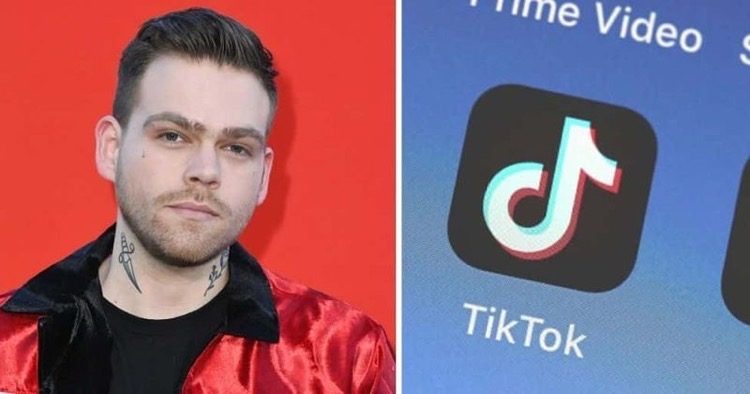
Source: Getty Images
In this case, an influencer marketing campaign aim was to support the app’s launch in 2020. It was the moment when the TikTok app was facing a ban in the US and many TikTok users were considering switching to another app and so the core idea of the ad campaign was to leverage that uncertainty as much as possible.
An influencer marketing agency team that was hired for this task reached 50+ influencers to run an influencer marketing campaign on Twitter and Instagram.
The campaign resulted in more than 20 million impressions on Twitter and Instagram combined, 250k downloads of the app, app’s ranking of #17 on the App Store.
From video-sharing to creating unique visual stories to post on social media apps.
Case Study #4 Instories app
Instories is a mobile app to create reels and visual stories right on a smartphone, using an extensive library of templates, and publish them later on Instagram or TikTok. The app is available on both Android and iOS platforms and supports all TikTok and Instagram video formats.
Influencer promo video for the Instories app
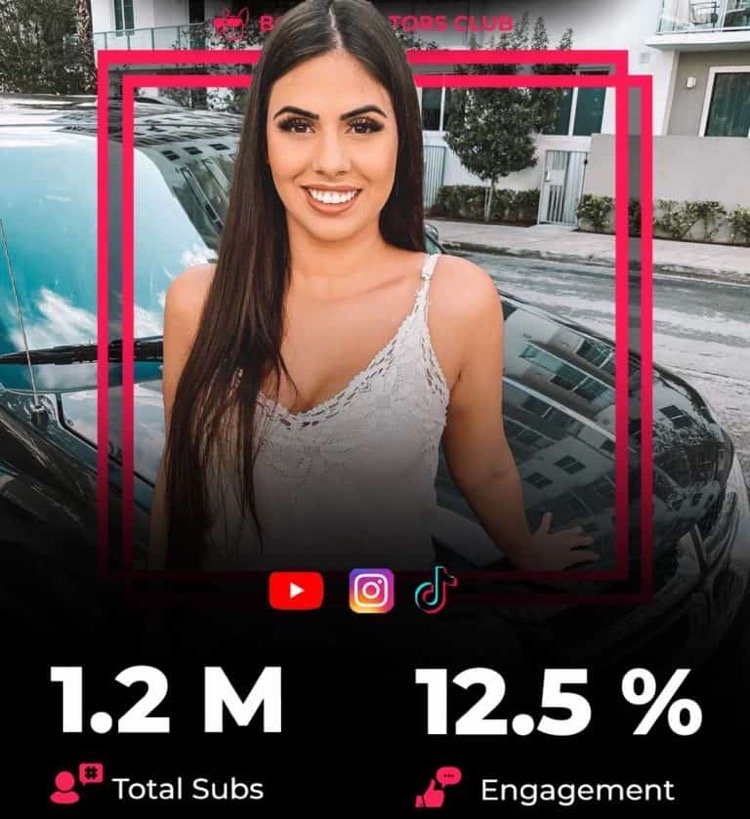
Source: Bold Creators Club
The Instories team hired an influencer marketing agency to run a promotion to increase the app market share in Brazil and introduce the latest update for the app.
The influencer marketing agency that took the task hired 15 influencers who launched ad campaigns on Instagram with reels.
The campaign achieved a high level of engagement, reaching 9.1% on average, which allowed the app to skyrocket to the top positions on the App Store, and secured the app’s high visibility in the target market. Plus to the significant jump in the app’s downloads in Brazil, the influencer marketing agency managed to create awareness among beauty, fashion, and lifestyle bloggers.
Switching the gears, from video-sharing apps to a casual gaming social platform from Prague, Czech Republic.
Case Study #5 Gamee app
The Gamee app is a casual gaming social platform, with lots of game titles, that connects gamers with brands and Web3 projects through play. The platform was launched in 2020 and was later acquired by Animoca Brands.
Gamee casual gaming social platform influencer marketing campaign on Instagram

Source: Starngage
The goal of the influencer marketing campaign was to raise awareness of the game, and significantly increase its user base, casual gamers of age 18-30, across multiple geographies within a short period of time.
The Gamee marketing team reached out to YouTube and Instagram influencers, and a big part of the campaign’s success was the platform’s ability for gamers to challenge the influencers in the games and hence engage with them directly.
As a result, at the beginning of 2017, the game acquired 500k to 1 million additional installs.
Switching from a casual gaming platform to a multi-player strategy game from the world-famous IGG.
Case Study #6 Lords Mobile: War Kingdom game app
Lords Mobile: War Kingdom is an award-winning multiplayer strategy mobile game that was published by IGG Studio in 2016. The game was praised right from the get-go, it was nominated by the Google Play store’s editors for “Best Competitive Game” and in 2017 it was nominated for the “Best Multiplayer Game” award.
Lords Mobile: War Kingdom App Store listing screenshot
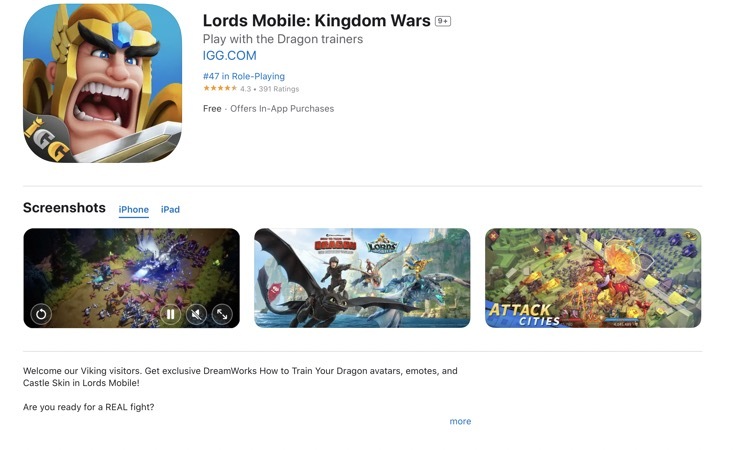
Source: App Store
The objective of this campaign was to reach out to 18-35-year-old UK-based males on both iOS and Android.
The influencer marketing agency’s team reached out to 5 Instagram and YouTube influencers to generate and promote a series of Instagram Stories and YouTube videos and entice people to install the game.
As a result, the game was exposed to 1.5 million viewers, it generated 86k engagements, and brought 12k game installs with an average CPI of 4.08 pounds / install.
Moving from the world of mobile games to saving money on mobile roaming abroad.
Case Study #7 Airalo app
The Airalo app helps smartphone users to avoid high roaming bills, using its world’s first eSIM store. Using the app, users can purchase temporary mobile data plans to use in a particular country during the trip, the app covers 190+ countries and regions.
The Airalo: eSIM Phone Internet listing screenshot
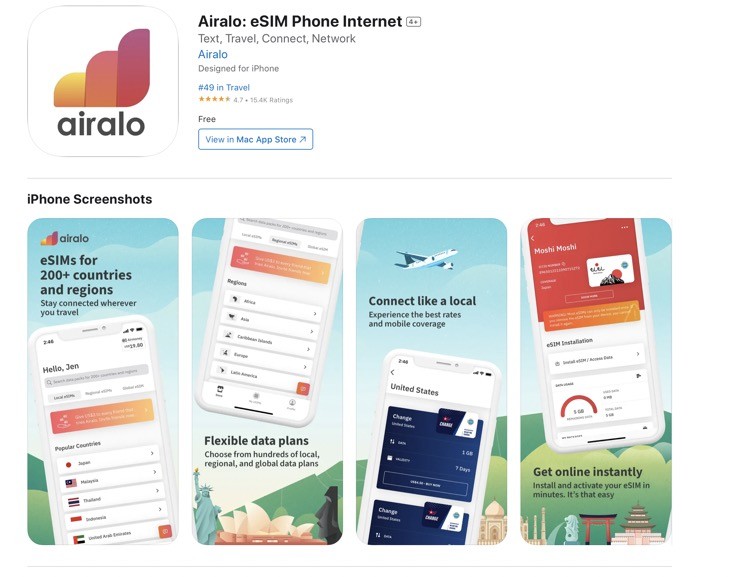
The campaign objective was to reach out travel community on TikTok and raise awareness about the app. The other, more specific one, was to drive high-quality app installs from 18-35 US-based users.
One of the major trends on TikTok is sharing travel tips and hacks to save money during trips, the team of micro-influencers educated audiences on the app’s benefits, sharing with them relatable international traveling scenarios. It led to a surge of app installs from the right audiences at the right moment.
The campaign resulted in 2.1 million video views, a 12,3% engagement rate, and $.0,23 / install rates.
Final Thoughts
Today influencer marketing is one of the most kinetic digital marketing tools for app marketers to use and achieve a high level of engagement with audiences around the globe. In these 7 case studies, we demonstrated the high potential of this channel across several app categories. All case studies should be considered within the time frames indicated for each and keeping in mind that still – to this day – influencer marketing performance tracking in many cases isn’t precise and begs for more accuracy.
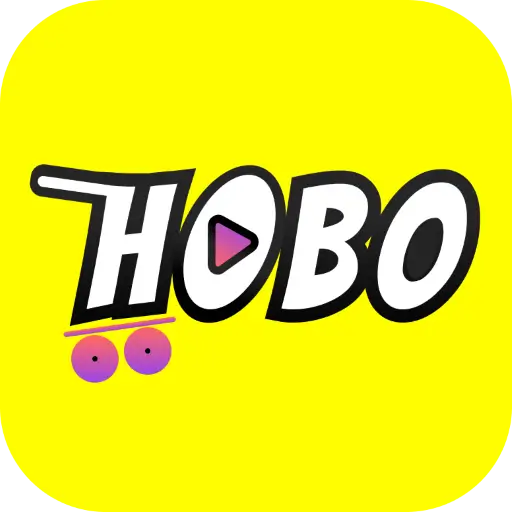
The Largest Community of Influencers in India
11 Remarkable Influencer Marketing Case Studies You Need to Know

Influencer Marketing Case Studies show us how brands work with influencers to grow their business. These examples inspire others to use influencer marketing. They reveal smart strategies, creative ideas, and successful campaigns. Let’s explore 11 case studies that highlight the power of influencers.
1. Daniel Wellington: Building a Global Watch Brand
Daniel Wellington is a brand that shows how effective influencer marketing can be. Instead of spending big on ads, they worked with micro-influencers. These influencers shared pictures of the watches on Instagram. The posts felt real and relatable, which made people trust the brand.
Through the utilization of discount codes and strategic collaborations, Daniel Wellington experienced a swift increase in its sales figures. Nowadays, it stands as one of the most recognized watch brands on a global scale. This case serves to illustrate that when partnering with smaller influencers, a significant impact can be made—however, this is contingent upon executing the strategy effectively. Although the approach seems straightforward, there are complexities involved; thus, careful consideration is essential.
2. Nykaa: Leveraging Beauty Influencers
Indian beauty brand Nykaa built its empire by working closely with influencers. They collaborated with makeup artists, beauty bloggers, and YouTubers. These influencers created tutorials and reviews featuring Nykaa products.
Nykaa ensured that the content was relatively easy to comprehend for all audiences. They even engaged with regional influencers to reach a broader demographic. This strategy, however, facilitated Nykaa’s emergence as a preferred brand for beauty enthusiasts in India, although the competition is fierce. Because of this, they continue to adapt their approach to maintain relevance.
3. Zomato: Creative and Relatable Campaigns
Zomato is known for its witty marketing campaigns. They collaborated with food influencers to create engaging content. For example, during their Zomaland food festival, they partnered with influencers to showcase dishes and experiences.
Through the utilization of Instagram Stories, Reels and posts, Zomato effectively engaged food enthusiasts in an enjoyable and genuine manner. This campaign demonstrated how collaborating with influencers who are passionate about your niche can yield significant outcomes; however, it is important to note that success often hinges on the right partnership. Although the approach was innovative, one must consider the broader implications of such strategies, because they can shape consumer perceptions.
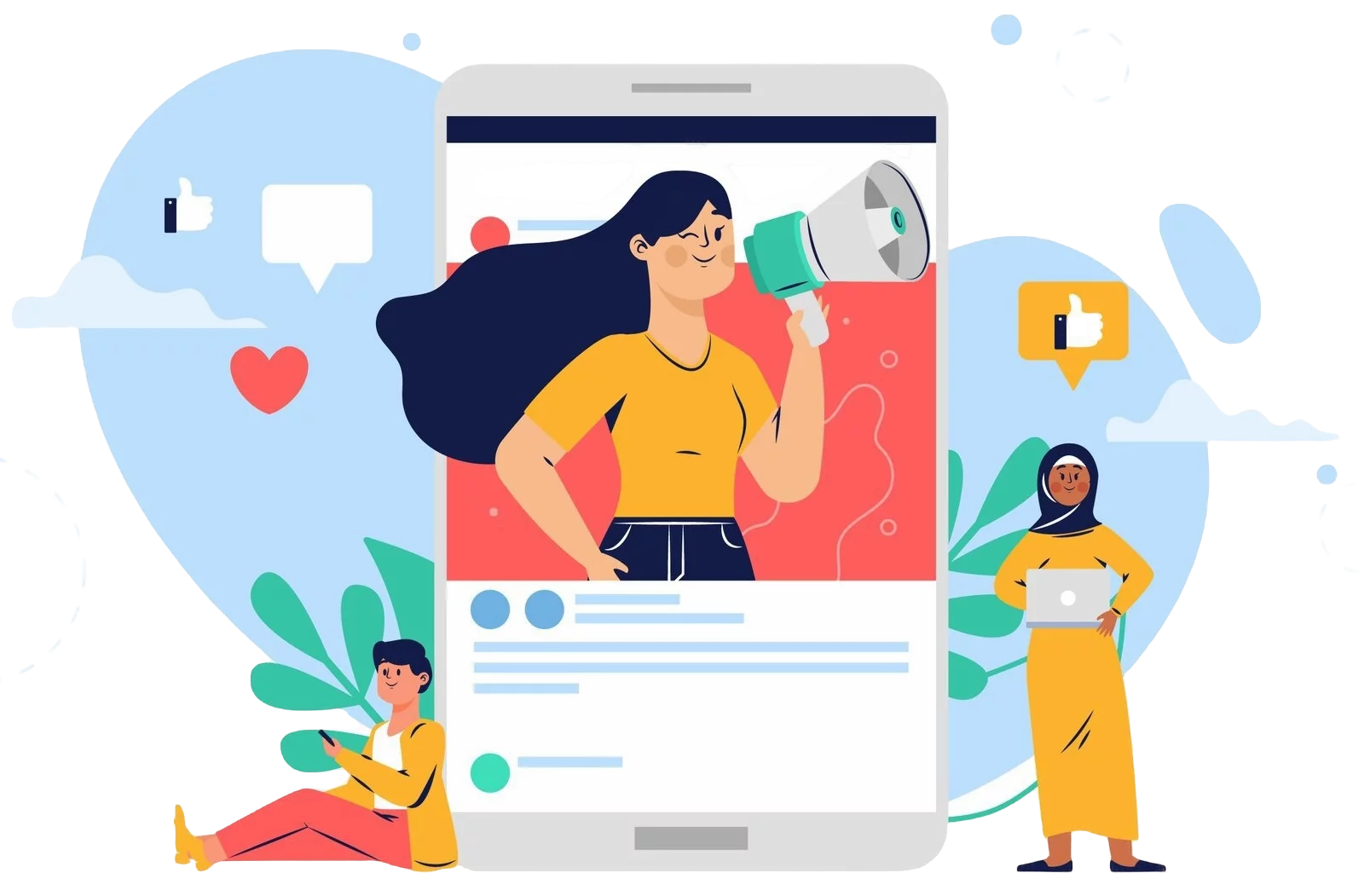
Amplify Your Brand, One Influence at a Time.
4. Coca-Cola: “Share a Coke” Campaign
Coca-Cola’s “Share a Coke” campaign stands out even today. They asked influencers to share photos of Coke bottles with personalized names. This made fans feel special and encouraged them to buy the product.
The influencers infused their unique essence into the campaign by narrating heartwarming stories. This case illustrates that incorporating a personal element can make campaigns more relatable; however, some may argue otherwise. Although it seems intuitive, the effectiveness of such strategies often varies. Because of this, understanding the audience’s perspective is crucial.
5. Mamaearth: Eco-Friendly Branding Through Influencers
Mamaearth, an Indian skincare brand, worked with mom influencers to promote its toxin-free products. By sharing personal stories and product reviews, these influencers built trust among their followers.
Mamaearth’s campaign which emphasized honesty and relatability successfully resonated with environmentally conscious parents; consequently, it transformed the brand into a household name. However, this strategy was not without its challenges, because some critics argued that the messaging could be overly simplistic. Although the brand thrived, it needed to navigate the complexities of consumer expectations.
6. Beardo: Targeting Men’s Grooming Needs
Beardo successfully tapped into the growing men’s grooming market. They collaborated with male influencers to promote beard oils, grooming kits, and skincare products.
The influencers who showcased transformations also shared various styling tips. This content resonated with their male followers; however, it proved how influencer campaigns can effectively boost niche markets. Although some may doubt the impact, the evidence is compelling because it highlights the power of social media in reaching specific audiences.
7. Tinder India: Sparking Conversations with Influencers
Tinder India teamed up with influencers to break stereotypes about dating. Influencers shared real stories and talked about healthy relationships.
By engaging in this initiative, Tinder not only advanced its application (app) but also fostered substantial conversations. This campaign underscores the significance of storytelling in influencer marketing; however, it also reveals the complexities involved. Although many may overlook these intricacies, they play a crucial role in the overall effectiveness of such strategies. Because of this, it is essential to recognize the influence that narratives can wield in shaping public perception.
8. H&M: Making Fashion Accessible
Global fashion brand H&M partnered with fashion influencers to showcase their collections. The influencers shared styling ideas, making H&M’s clothing feel accessible to everyone.
This campaign indeed helped H&M engage with younger audiences; it also increased store visits. It demonstrates how fashion brands can create excitement—however—by collaborating with influencers. Although some may question the effectiveness of such strategies, the results suggest that this approach can be beneficial. Because of these partnerships, brands can reach new demographics and enhance their visibility.
9. Swiggy: Engaging Food Bloggers
Swiggy collaborated with food bloggers and influencers to promote local restaurants. Influencers shared videos of their food experiences, tagging Swiggy in their posts.
This campaign was effective because it felt authentic and enjoyable. It also motivated individuals to explore new dining options through Swiggy; however, some were hesitant at first. Although the overall response was positive, a few participants expressed concerns about the delivery time. This engagement ultimately fostered a sense of community, which was crucial for its success.
10. Pepsi: Viral Challenges with TikTok Influencers
Pepsi’s #PepsiChallenge on TikTok became an instant hit. They worked with TikTok influencers to create dance challenges and fun videos. The campaign went viral and engaged millions of users worldwide.
This case demonstrates that the integration of influencers especially on trending platforms such as TikTok can result in significant brand visibility. However, one must consider the nuances involved; the effectiveness of this strategy may vary. Although many brands have found success, others struggle because they fail to engage their target audience effectively. This variability underscores the complexity of digital marketing in today’s landscape.
11. Fastrack: Connecting with Gen Z
Fastrack worked with Gen Z influencers to promote its trendy accessories. These influencers created relatable content on Instagram and Snapchat.
Fastrack’s methodology demonstrated that comprehending one’s audience can significantly enhance the effectiveness of campaigns. By articulating messages in a manner that resonates with Gen Z, they cultivated a devoted fanbase. However, this approach requires continuous adaptation, because audience preferences evolve rapidly. Although the initial connection was strong, maintaining engagement is crucial; thus, marketers must remain vigilant.
Influencer Marketing Case Studies prove the power of working with influencers. Whether it’s building trust, growing sales, or reaching new audiences, influencers can do it all. These 11 examples show how creativity and authenticity drive success.
When brands collaborate with the appropriate influencers, the outcomes can be remarkable. However, if you’re contemplating influencer marketing, these case studies serve as an excellent starting point. Although the success varies, this approach can yield significant benefits, but it requires careful consideration of the chosen partners.
Why Hobo.Video is Your Best Choice for Influencer Marketing
When it comes to influencer marketing and its case studies, Hobo.Video is the perfect partner. Our AI-powered platform connects brands with influencers, UGC creators, and artists. We handle everything from campaign planning to execution, ensuring measurable success.
At Hobo.Video , we believe in authenticity and creativity. Our vast network includes influencers from all niches, making it easy to find the perfect match for your brand. Whether you’re promoting skincare, food, or fashion, we’ve got you covered.
Are you prepared to craft your own influencer marketing success narrative? Consider Hobo.Video : a platform that can potentially elevate your brand in unprecedented ways. However, many people underestimate the power of effective marketing strategies and case studies. This is crucial, because without the right tools, your efforts might not yield the desired results. Although it may seem daunting at first, embracing innovative solutions can lead to remarkable growth. So, why wait? Start your journey today!
So, If you are a brand, Register Here!
Related posts:
- Influencer Marketing: The Top-of-the-Funnel Strategy by Hobo.Video
- Revolutionizing Brand Engagement: Key Insights from Influencer Marketing Campaigns Across Industries
- Expanding Beyond TV: How Mountain Dew Used Influencers to Broaden Campaign Reach
- Revamping Brand Image: Sodexo’s Success Story with Influencer Marketing
By Pritha Ash
Related post, top 13 tips to boost instagram engagement in 2025.
How to Add Links to Your Instagram Bio and Boost Sales
13 key tips to craft a memorable instagram bio in 2025, understanding the creator economy: what to expect in 2025 and beyond.

Our Insights
10 global influencer marketing case studies you need to know about.
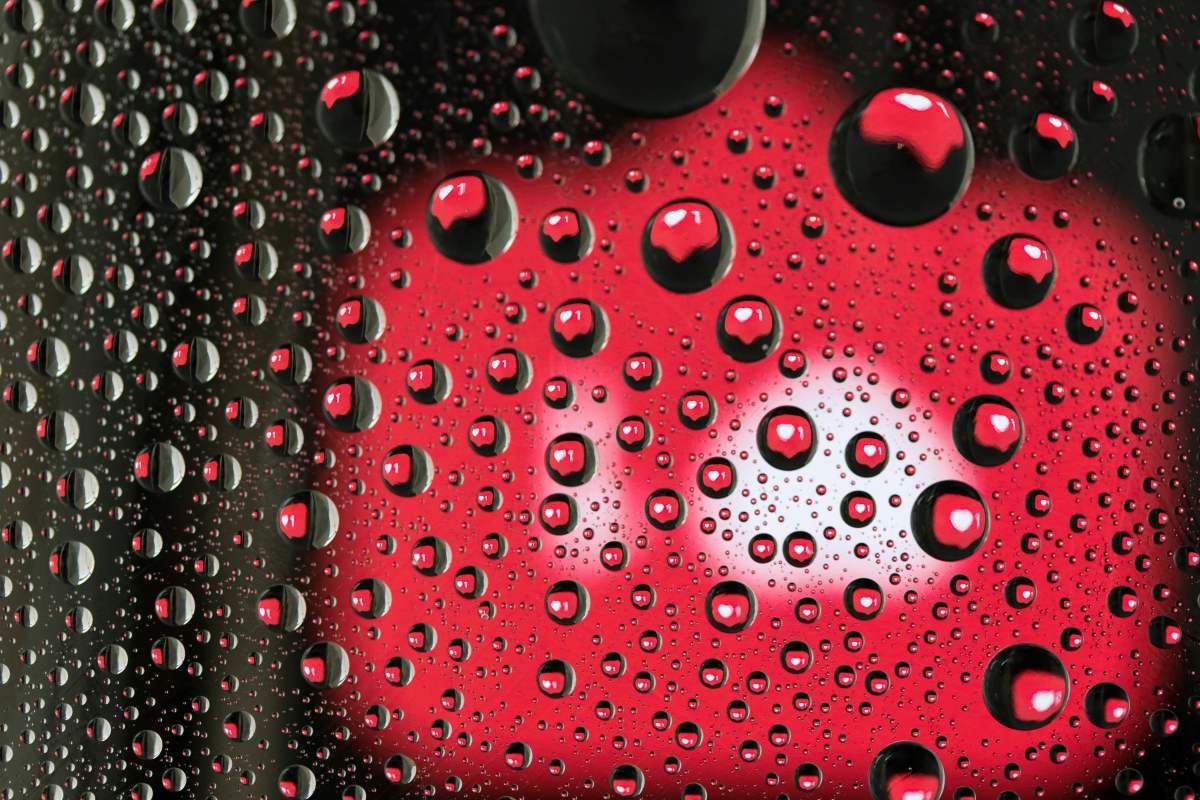
Influencer marketing has become an essential strategy for brands worldwide, helping them reach targeted audiences, drive engagement, and generate sales.
Many companies have launched successful influencer campaigns that not only achieved their objectives but also set new industry benchmarks. By studying these campaigns, brands can learn valuable lessons on how to craft impactful, authentic, and results-driven influencer strategies.
Here are 10 global influencer marketing case studies that showcase how brands have harnessed the power of influencers to create remarkable success stories.
1. Daniel Wellington: The Power of Micro-Influencers
Campaign Overview: Swedish watch brand Daniel Wellington became one of the most successful examples of micro-influencer marketing. They partnered with thousands of micro-influencers worldwide, giving them free watches in exchange for posts tagged with DanielWellington.
Results: This strategy helped the brand achieve massive social media visibility and establish itself as a global player in the fashion accessory market. By targeting smaller influencers, they ensured authentic content that resonated with niche audiences.
Key Takeaway: Micro-influencers can generate high engagement and brand credibility, especially when working with a large network of individuals in different markets.
2. Glossier: Building a Community of Brand Ambassadors
Campaign Overview: Skincare and beauty brand Glossier has built its business around community-driven influencer marketing. Rather than working with celebrities, they’ve cultivated a network of real users and micro-influencers, encouraging them to share their experiences and stories with the brand’s products.
Results: Glossier’s community-focused approach resulted in massive organic growth, making the brand a leader in the beauty space. Their reliance on authentic, user-generated content has led to high levels of engagement and customer loyalty.
Key Takeaway: Building a community of loyal micro-influencers can help foster genuine relationships with consumers and promote long-term brand growth.
3. Adidas and Ninja: Leveraging Gaming Influencers
Campaign Overview: Adidas partnered with Tyler "Ninja" Blevins, one of the world’s most popular gaming influencers , to launch the limited-edition “Time In” sneaker. Ninja promoted the sneaker through his gaming streams and social media, targeting both sneakerheads and gaming enthusiasts.
Results: The campaign successfully blended sneaker culture with gaming, driving buzz and generating significant media coverage. The sneaker sold out quickly, demonstrating the power of niche influencers in creating crossover appeal.
Key Takeaway: Partnering with influencers in niche industries, like gaming, can help brands reach untapped audiences and drive interest in unique product categories.
4. Fenty Beauty: Inclusive Influencer Strategy
Campaign Overview: When Fenty Beauty , Rihanna’s makeup line, launched in 2017, it made waves for its 40-shade foundation range. The brand worked with a diverse group of beauty influencers from different ethnicities and skin tones to promote the brand’s inclusive message.
Results: The campaign went viral, generating millions of views on social media and quickly selling out its products. Fenty Beauty became a cultural phenomenon and set a new standard for diversity and inclusivity in beauty marketing.
Key Takeaway: Influencers that reflect your brand’s values and cater to diverse audiences can amplify your message and build strong connections with consumers.
5. H&M and Giambattista Valli: Fashion Collaborations with Mega-Influencers
Campaign Overview: H&M collaborated with Italian fashion designer Giambattista Valli to launch an exclusive collection. They worked with mega-influencers, including Kendall Jenner, to promote the line at events, on Instagram, and through behind-the-scenes content.
Results: The campaign generated significant buzz across fashion and social media, leading to high demand and rapid sellouts in stores and online. The collaboration was praised for combining luxury fashion with accessible pricing.
Key Takeaway: Working with mega-influencers can create high visibility and excitement around exclusive product launches, especially in industries like fashion.
6. Coca-Cola: ThisOnesFor Campaign with Music Influencers
Campaign Overview: Coca-Cola launched the ThisOnesFor campaign to celebrate everyday moments and connections, partnering with influencers and musicians like Jason Derulo to share the message across various platforms.
Results: The campaign successfully connected with young, global audiences, driving engagement through music, live performances, and social media storytelling. It became a key part of Coca-Cola’s broader brand repositioning.
Key Takeaway: Influencer campaigns that leverage culture, music, or entertainment can deeply resonate with younger audiences and reinforce brand values.
7. Airbnb: WeAccept Campaign Promoting Diversity
Campaign Overview: Airbnb's WeAccept campaign featured influencers from diverse backgrounds, promoting inclusivity and the brand's message of belonging. The campaign encouraged influencers to share their personal stories about acceptance and diversity while staying at Airbnb properties.
Results: The campaign generated widespread support and positive PR, aligning Airbnb with values of diversity and inclusivity. It helped build trust with a global audience, particularly in the context of socially conscious marketing.
Key Takeaway: Partnering with influencers who align with your brand’s social values can create authentic campaigns that strengthen consumer trust and loyalty.
8. Gymshark: Fitness Influencers Driving Brand Growth
Campaign Overview: Gymshark , a UK-based fitness apparel brand, skyrocketed to success by collaborating with fitness influencers across YouTube, Instagram, and TikTok. Influencers shared workout routines, lifestyle content, and their love for Gymshark’s gear.
Results: Gymshark built a global fitness community, turning influencers into brand ambassadors and driving exponential growth in both brand visibility and sales. The strategy helped the brand become a leader in the competitive fitness apparel market.
Key Takeaway: Long-term partnerships with influencers who are passionate about your brand can drive sustained engagement and community growth.
9. GoPro: User-Generated Content and Adventure Influencers
Campaign Overview: GoPro’s influencer strategy revolves around user-generated content, where adventure enthusiasts and influencers share their extreme sports experiences using GoPro cameras. They encourage followers to share their content with GoPro, showcasing the brand’s capabilities.
Results: This approach resulted in thousands of hours of user-generated content, creating a library of engaging, authentic material that continuously drives brand awareness and sales. GoPro has maintained its position as the go-to camera for adventure and action sports.
Key Takeaway: Encouraging user-generated content from influencers can help create a steady stream of authentic content and maintain brand visibility over the long term.
10. Calvin Klein: MyCalvins Campaign with Celebrity Influencers
Campaign Overview: Calvin Klein’s MyCalvins campaign became iconic by working with top-tier celebrities like Justin Bieber, Kendall Jenner, and Hailey Baldwin. These influencers shared intimate, stylish photos featuring Calvin Klein underwear, often sparking viral conversations online.
Results: The campaign helped revive Calvin Klein’s brand relevance among younger audiences, driving huge sales increases and extensive social media engagement. It also expanded the brand’s appeal globally.
Key Takeaway: High-profile influencer campaigns can reignite brand interest and attract a new generation of consumers, especially in fashion and lifestyle markets.
These 10 global influencer marketing case studies demonstrate the power of influencers in shaping brand narratives, building trust, and driving sales. From micro-influencers fostering niche community engagement to mega-influencers creating viral buzz, brands can leverage influencer marketing in a variety of ways to meet their business goals. By learning from these successful campaigns, companies can develop tailored influencer strategies that resonate with their target audiences and maximize results.
Interested to hear about our services?
Most popular reads, the future of user-generated content (ugc): trends to watch in 2025.

The Rise of Authenticity: Why Consumers Trust Influencers More Than Brands

What is Influencer Marketing?

Twitch: Tapping Into Live Streaming Influencers for Real-Time Engagement

The Future of Content Marketing: Trends to Watch in 2025

Partnering with Cooking Influencers: A Guide for Food & Beverage Brands

Leveraging Influencers and Tutorials in Tech Content Marketing

Creating Shoppable Fitness Content: A Guide to Social Commerce Success

Want to work with us? Feel free to contact us today!
Headquarters.
Level39, Canada Square E14 5AB London United Kingdom
Follow us on LinkedIn
Lorem ipsum dolor sit amet consectetur elit
Campaign Goals
Integrations.

Download our app to collaborate with brands on Insense.

12 Real-World Influencer Marketing Case Studies for DTC Brands

As a marketing professional for DTC brands, you’ve probably heard about the growing success of influencer marketing campaigns.
However, you’re probably still wondering what makes this marketing strategy so popular and effective.
Well, long story short, traditional marketing strategies have mostly been replaced by digital marketing strategies.
On top of that, people started to place less trust in brands than they used to.
Instead, customers now look for recommendations from people they know and social media influencers.
Overall, if you find a successful TikTok or Instagram influencer to promote your brand’s products and come up with a winning influencer marketing strategy , you’ve got a lot to gain.
Two of the benefits that might pique your interest are increased brand awareness and ROI (return on investment). But there are many more.
Of course, you might need a bit of help when you first get into influencer marketing .
However, using an influencer marketing platform like Insense can make your life a lot easier.
Still not convinced?
No worries, we’ve compiled a list of 12 influencer marketing case studies of DTC brands to show you all the perks and amazing results.
So, let’s dive in!
Case Study #1: Digital Beauty Group
Industry: Beauty
Digital Beauty Group is a brand created by a married couple, Craig and Amy Romero, who provide high-quality skincare and makeup products to their audience.
They use customer-demand data and innovation to come up with exquisite, high-performing products for everyone.
The challenge
With so many skincare and makeup products on the market, Digital Beauty Group needed to find a way to grab the attention of its target audience.
So, it decided to try organic social media posting for product endorsements with the help of influencers.
However, finding the right people to create user-generated content for its beauty brand proved to be harder than expected. Plus, time was not on their side.
Overall, trying to make videos that stand out on TikTok was draining the Group’s budget. A more cost-efficient solution was needed.
The solution
Using Insense, one of the top influencer marketing tools , Digital Beauty Group was able to easily identify and communicate with top Instagram influencers that aligned with its beauty brand.
The content creators posted pieces of content to their Amazon storefront and Instagram stories for 6 months to generate brand exposure.
The beauty brand gained 100+ UGC pieces in 6 months, at a cost of approximately $67 each.
Sounds too much?
Well, not if you take into account the resulting boost in brand awareness, reach, and ROI, with a 38% conversion rate (per product) on Amazon listings.
Plus, DBG was able to reuse the influencer content on its social media platforms and website. So, this solution proved to be very cost-effective.
👉 Check out the full case study here .
Case Study #2: goPure
goPure is a small business with a big goal: to provide natural and safe skincare products to its clients.
It uses only natural botanicals and vitamins that protect the skin from irritation.
Just like any other small retailer, goPure needed to gain reach and credibility in the beauty and care industry to boost sales.
And what better way to achieve that than by posting trustworthy, authentic content through influencer marketing campaigns ?
The only problem: the budget. After all, it’s not uncommon for small businesses to struggle with investing a lot in digital marketing.
Using Insense’s Creator Marketplace feature, goPure was able to contact and start collaborating with over 160 micro-influencers.
The best part: the brand used product seeding and influencer gifting, aka offered giveaways, to finance its influencer marketing campaigns.
So, the costs were minimal!
In just 2 months, the content creators who worked with goPure generated 147 video content reviews with zero cost.
Due to the authentic content, goPure’s conversion rates reached an astonishing 26%.
But even more impressive than that is the revenue generated by these influencer marketing campaigns — it exceeded $200K and registered a 204x ROI.
👉 Learn more about this case study here .
Case Study #3: Nesto
Industry: Business and finance
Nesto is a Canadian pioneer in online mortgage lending. The platform offers an easy mortgage application process that saves people a lot of time.
How? By eliminating the need to show up in person and fill out loads of paperwork. Instead, you consult with Nesto’s experts and upload your documents online.
Nesto had leveraged the power of user-generated content in the past and knew how well it could work.
However, in the past, the content was generated in-house by the two business owners. So, it was neither creative nor diverse but it was very time-consuming.
To increase brand awareness and conversions, Nesto needed to find a large number of experienced content creators and collaborate with them seamlessly.
The advanced search filters provided by Insense allowed the company to find the right influencers without the need for time-consuming influencer outreach .
It also used Insense’s creative brief template to help the influencers create testimonial videos based on Nesto’s requirements.
Nesto received over 150 influencer applications and gained over 60 high-quality and unique video testimonials.
Then, it repurposed the video content for its ads and registered an incredible 23% reduction in Cost Per Lead (CPL) compared to the regular ads on Meta.
👉 For more info, read the full case study here .
Case Study #4: BabyQuip
Industry: Lifestyle
BabyQuip is a leading baby-gear rental service and marketplace that operates in over 1,000 cities across the globe.
It offers safe, clean, and insured baby equipment for traveling parents.
Since BabyQuip operates worldwide, it needed to enhance brand awareness and reach in different countries.
To do that, it needed to find TikTok influencers (aka traveling parents) from different countries who aligned with the brand.
Using Insense, BabyQuip was able to search for content creators in 5 different countries.
Even more so, it used the advanced search filters to narrow down its search by location, follower count, engagement rate, and average views.
After just 1 month, BabyQuip started collaborating with over 25 content creators for its TikTok influencer marketing campaigns.
Plus, those influencers matched the exact requirements: 2k-200k follower count, 8% engagement rate, and over 1,000 average views.
👉 Learn more about this influencer marketing case study here .
Case Study #5: Solawave
Solawave offers science-backed skincare topicals and tools that reduce the appearance of fine lines, wrinkles, and blemishes.
The best part is that people of all genders, ethnicities, and skin tones can use its products.
Solawave needed to boost brand awareness and reach on social media platforms.
However, because of a limited budget, it wanted to use product seeding instead of monetary compensation for UGCs.
Through Insense, Solawave managed to connect with 244 influencers who wanted to create pieces of content for it in exchange for free products.
Solawave paid $0 and received 180 pieces of influencer content in a month.
The retailer also asked those influencers who showed real interest in its products to post their UGCs on TikTok .
The result?
A surprising 5% average engagement rate for each post.
👉 To find out more, check the full case study here .
Case Study #6: Zing Coach
Industry: Sports and fitness
Zing Coach is a mobile fitness app that allows you to create customized workout plans to improve your health.
It’s designed for both men and women and it uses body data to create personalized workouts.
Zing Coach wanted to know what type of ads resonated best with its target audience to ensure campaign success.
It wanted to find male, athletic, and charismatic content creators who matched Zing Coach’s target audience demographic, to generate UGCs for creative testing.
Zing Coach partnered with Insense to search for the right influencers by niche and gender.
Then, it used the brief category filters and screening question field to narrow down the search.
More precisely, it asked the content creators to send an audition video answering questions about their fitness routine and journey.
Zing Coach obtained 22 pieces of content per month for creative testing and influencer whitelisting .
Then, based on the creative testing, it discovered that the specific influencer profile it searched for lowered its Cost Per Acquisition (CPA) by 25%.
👉 Learn more about this strategy in the full case study .
Case Study #7: Particle for Men
Particle for Men is a DTC brand that offers skin, hair, and body care products for men to enhance their looks.
Particle for Men needed to find a more affordable way of identifying content creators for whitelisting.
It was also seeking a tool that could streamline influencer relationship management and the whitelisting process.
The brand switched from an alternative platform to Insense, which was much cheaper.
In addition, using the Creator Marketplace and Direct Chat features, Particle for Men was able to look for influencers who aligned with the brand and manage its communications with them in one place.
By switching to Insense, Particle for Men saved $425 per month.
It also found 21 content creators matching its requirements in only one month.
As a result, it was able to run 11 whitelisted ads in just one month.
👉 Take a look at the full case study here .
Case Study #8: Any Age Activewear
Any Age Activewear is an e-commerce brand that offers activewear to women over 50.
Its mission is to help women in this age group feel good about themselves regardless of their changing bodies and the underserved marketplace.
Any Age Activewear needed to enhance brand awareness. And since it had a large stock of products, it decided to use giveaway campaigns for creative testing.
However, that meant finding a large number of creators who fit the brand, using a time- and cost-effective solution.
Using the campaign management feature on Insense, the brand ran 7 product seeding campaigns.
At the same time, Any Age Activewear set a 2-week content lead time.
The e-commerce brand’s 7 giveaway campaigns produced a 90% conversion rate.
As a result, Any Age Activewear was able to identify and hire 36 influencers who matched its target audience demographic of active women over 50.
Plus, in just 2 weeks, it received 43 user-generated content assets, which it repurposed in different ads.
👉 For more on AAA’s amazing results, read the full study .
Case Study #9: MadeGood
Industry: Health and wellness
MadeGood is a brand whose main focus is to offer organic snacks that promote overall health and make people happy.
Its products are allergen-free and consist of pure, organic, gluten-free oats. And on the plus side, they are delicious.
MadeGood wanted to boost brand awareness, engagement rate, and, ultimately, conversions through seasonal influencer marketing campaigns.
To achieve this, it needed a user-friendly and highly effective tool that would make it easier to use influencer marketing.
MadeGood used Insense’s creator filters to identify Instagram influencers who perfectly matched the brand’s identity.
Then, using the campaign management feature, it ran 5 successful campaigns.
MadeGood identified 75 content creators who fit its criteria and partnered up with them.
The user-generated content boosted the brand’s overall engagement rate by between 0.4% and 2% and it only took 5 influencer marketing campaigns to achieve that.
Plus, its campaigns achieved a total reach of 280K!
👉 For more on this success story, take a look at the full case study .
Case Study #10: Social Fire Media
Social Fire Media is a digital advertising agency that focuses on social media advertising, Google AdWorks, SEO, and even web design.
Its goal is to drive profitability and growth to businesses of all sizes that operate in various industries.
Since Social Fire Media manages influencer marketing campaigns for many clients, it needs a solution that facilitates this process.
At the same time, it needed to source more high-quality influencer content in a budget-friendly manner.
Insense offered Social Fire Media the option to manage all of its clients’ influencer campaigns in one place.
In addition, Insense also facilitated the process of finding the right content creators for different industries, through its advanced search filters.
An added bonus was Insense’s Direct Chat feature that allowed Social Fire Media to communicate effectively with all the content creators.
Social Fire Media was able to successfully launch and manage 12 product seeding campaigns for 6 different clients at the same time.
Insense also helped it partner up with 106 talented influencers at zero cost.
Out of all those creators, Social Fire Media even identified some that loved its clients’ products so much that they posted their product endorsement UGCs on their TikTok profiles, producing a 6% engagement rate.
👉 More on this in the full case study .
Case Study #11: NutraChamps
NutraChamps is a natural supplements DTC brand whose goal is to help people improve their health to live long and happy lives.
Its supplements include naturally sourced and safe ingredients that promote heart health, good digestion, weight management, and much more.
NutraChamps wanted to increase reach for its new product, Super Green, to drive sales.
At the same time, it needed to find a larger number of influencers who aligned with the brand’s identity to create unique and authentic content for the product.
Plus, it was looking for a solution that would save time and money in terms of managing influencer campaigns.
Insense allowed NutraChamps to discover health and wellness creators who fit their brand, through the Creator Marketplace feature.
Insense also provided a time- and cost-effective solution for managing new influencer campaigns and collaborations.
With the help of Insense, NutraChamps started collaborating with 322 Instagram influencers who matched its brand.
The organic content generated by these influencers produced 99K video views on Instagram, enhancing the new product’s reach.
The best part was that Insense was so easy to use that NutraChamps only needed 2 social media coordinators to manage the entire influencer marketing process.
👉 Do you want to learn more about it? Check out the full case study, here .
Case Study #12: Easy A Media
Easy A Media is a digital marketing agency that uses data-driven marketing, store optimization, and brand strategy to boost sales for DTC e-commerce businesses.
Easy A Media was in dire need of high-quality authentic content for creative testing of its ad.
It also wanted to identify a cost-effective solution to sourcing large volumes of user-generated content with which to service its clients.
Insense offered Easy A Media an easy way to identify micro-influencers who fit its clients’ different niches.
At the same time, the Creative Brief templates and Direct Chat feature helped it easily communicate the specific requirements for each campaign to the Instagram influencers.
Easy A Media was able to hire 100 Instagram micro-influencers from different niches who generated 100 product testimonials and review videos.
All that took only 45 days. Plus, the influencer content came at zero cost because the brand used giveaway campaigns.
👉 For more on this successful influencer marketing strategy, read the full case study .
Ready to Dive Headfirst Into Influencer Marketing?
There you have it; 12 successful real-world influencer marketing case studies.
As you can see, this digital marketing strategy can be extremely rewarding.
Influencer marketing can boost brand awareness, reach, engagement rates, conversions, and ROI.
Plus, whether you’re using TikTok, Instagram, or Facebook influencer marketing , it’s as effective for small DTC brands as it is for bigger brands.
So, are you ready to dive headfirst into influencer marketing campaigns?
If you still have some doubts or questions, don’t hesitate to contact us .
Then, when you’re ready for the next step, book a demo with Insense !
Customer Success Manager at Insense
Manu is passionate about technology and helping brands understand the impact of creator marketing and taking advantage of the opportunity it represents.
Get started with Insense today
Start getting UGC and collaborating with creators for organic posting and whitelisted ad campaigns.

You might also like...

TikTok Affiliates 101: How to Build a Winning Strategy

5 Tactics to Maximise Your Affiliate Marketing Revenue on TikTok

Why Insense Stands as the Best UGC Agency for Brand Collabs

Social Media Management
- Review Management
9 Influencer Marketing Case Studies That Got Incredible Results
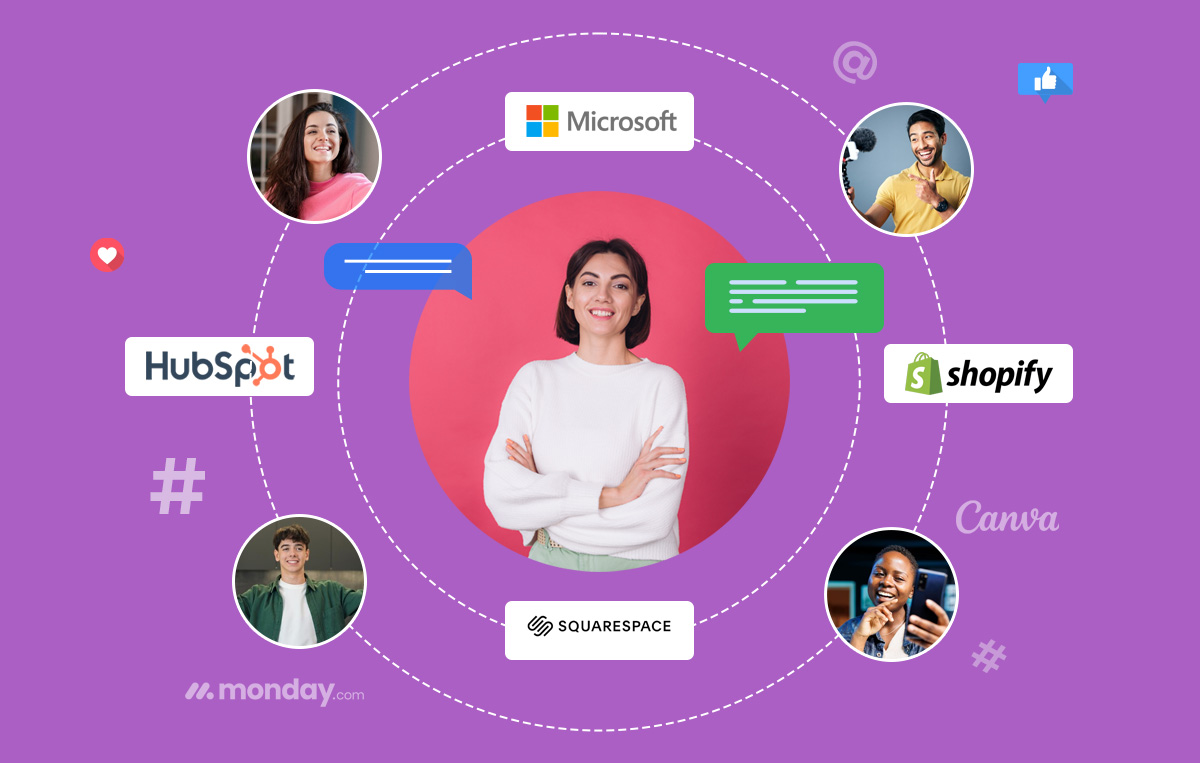
Power of Influencer Marketing in B2B SaaS
9 top b2b & saas influencer marketing case studies, 1. hubspot (#inbound2023), 2. salesforce (#cnx23), 3. shopify (#pocgo):, 4. microsoft, 5. squarespace, 7. monday.com.
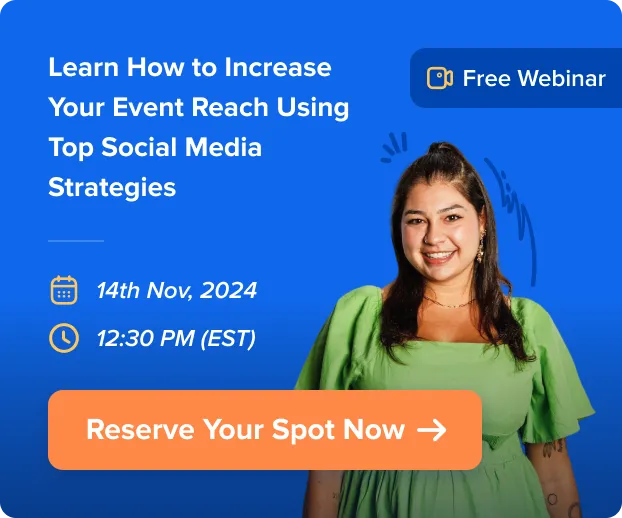
The power of influencers can turn a brand into a phenomenon and a product into a movement.
The same philosophy also applies to the B2B SaaS (Software as a Service) industry. It is an extremely competitive and ever-evolving industry where new features, tools, and software are born every day to take their place in the market. In this market, the insights derived from influencer marketing case studies become invaluable. It offers a road map to navigate success through the competition.
Being a part of the SaaS brand marketing team, your responsibility lies in showcasing the tangible benefits of an intangible product. To stay ahead of the competition, thinking strategically and innovatively is necessary, and it starts with having an impeccable marketing campaign.
Influencers are starting to hold a major place in every brand’s online marketing campaigns, and so are influencer marketing case studies. It helps you to evaluate your steps and learn from others’ mistakes.
To promote and sell a SaaS product, winning trust is the top-of-the-funnel task, and it can be achieved with influencers. These personalities have a great online presence, and their audience strongly trusts them.
To drive a successful influencer marketing campaign , staying up-to-date with the industry trends and success strategies is most important. You should start by reading some impactful influencer marketing case studies.
These case studies will help you know how to shape brand awareness, growth, and engagement in the B2B SaaS arena with influencer marketing.
In the past decade, the marketing landscape has taken a huge turn. Industry niches that used to stick to their same old marketing schemes are not experimenting.
B2B SaaS, a field that used to rely completely on traditional advertising strategies, is now testing its luck in influencer marketing. They overcame the misconception that influencers are not limited to one-size-fits but a versatile approach that works wonders for SaaS.
Influencer marketing is a relationship-demanding approach that is not just restricted to consumer-based brands, but it’s achieving huge success in the B2B domain.
As per the data from Stastica, the SaaS market will reach $374.50 billion by 2028 . Influencer marketing was estimated to be worth $21.1 billion in 2024 . Imagine the profit you can generate by combining these two different segments of businesses.
To plan a successful influencer marketing campaign for your B2B SaaS brand, start by learning from the best. This blog will walk you through the Top 9 influencer marketing case studies to understand their planning, execution, and outcome. It will help you protect your strategy from possible down-slides and take note of beneficial tips.
Here we go!
HubSpot is a leading B2B SaaS Customer Relationship Management (CRM) platform trusted by several agencies worldwide. With its horizon expanding in B2B, it is also well renowned in the B2C industry. It helps you manage all your sales and customer relationships in one place.
HubSpot’s latest influencer marketing campaign aimed to derive more registration and brand awareness for its INBOUND 2023 conference . The activities are planned to attract a larger target audience to their conference.
By leveraging the strong presence of influencers relevant to their reach, HubSpot aims to increase its scale in the competitive CRM and marketing software industry. HubSpot wants to gain more reach in the online and offline sales and marketing industry.
Execution and Collaboration
HubSpot executed its influencer marketing for the online + offline INBOUND 2023 conference by collaborating with prominent marketing and sales influencers .
They invited influencers like Neil Patel , Eric Siu , Reese Witherspoon , and Ann Handle . They were part of keynote sessions, panel discussions, workshops, etc.
View this post on Instagram A post shared by Eric Siu | Leveling Up 👾 (@ericosiu)
View this post on Instagram A post shared by HubSpot (@hubspot)
For the online campaign, influencers jointly created social media content, blog posts, and videos with HubSpot to highlight the upcoming event, expert insights, and industry trends.
View this post on Instagram A post shared by Christina Kay | #GrowthMarketer | #HubSpotAdvocate | #GTM (@the.christinakay)
Through the collaboration activities, influencers promoted the event on social media platforms to encourage their followers to register for the conference.
With their messaging style, HubSpot was able to generate yet another milestone with more than 12K attendees offline and 100K viewing online .
Online sessions before and during the event witnessed higher attendance, with the audience eager to learn from the industry experts . The online influencer marketing campaign got a high reach, making this event a phenomenal success.
This entire influencer marketing case study discusses the enhanced HubSpot reputation presented by the popular faces, making it stand out as the industry leader.
Key Takeaways
Best thing to learn from HubSpot influencer marketing case study:
- Align with industry experts online and offline to tap the wider audience related to your niche.
- Go for bigger faces for offline events so attendees find their insights more reliable and take them seriously.
- Give place to influencers for every part of the activity like workshop, hosting, etc. This way, every aspect of your event will be popularized.
Salesforce is a prominent name in the technology and B2B SaaS business world. It is globally recognized for its Customer Relationship Management (CRM) software solutions. One-stop destination to manage all your sales, services, marketing, and analytics that is capable of fostering stronger customer relations and growth for businesses.
Being a very active event organizer such as Dreamforce, Salesforce World Tour, Trailblazer, and more, Salesforce has generated immense buzz with its newest event, “Connection 2023,” with influencer marketing campaigns on social media .
Its main objective was to attract as many people and businesses as possible who have an interest in growing in technology and customer relationships. With influencer reach, Sealsforce plans to establish a stronger position within the B2B SaaS industry.
With its unique promotional style and authentic ideas for influencer collaboration, Salesforce wishes to leave a lasting impact and convert many into Trailblazers .
Salesforce invited not only numerous influencers but businesses too to be keynote speakers, share ideas, and discuss digital transformations and insights on CRM. Powerful personalities and leaders such as Dan Levy, Marc Benioff, and Reid Hoffman were invited as a speakers.
View this post on Instagram A post shared by Leonie Woolf (@leoniekwoolf)
Their never seen before collaboration style with the influencers of not just their niche but of different fields was also remarkable. Salesforce has capitalized on every possible medium to promote its “Connections 2023” event.
View this post on Instagram A post shared by Salesforce (@salesforce)
Forming connections with their various products and events to squeeze more juice out of their influencer marketing campaign has resulted in their favor.
Thanks to their influencer marketing activities, “Connections 2023” attracted a 35% increase in event attendance , seeing a prominent rise from the previous year.
Overall, the event got millions of mentions on all the global social media platforms, and influencers benefited by reaching over 12 million users .
Influencer marketing has made it easy for Salesforce to generate sales in this B2B SaaS industry with a boost in brand authority.
Things to learn from the Salesforce influencer marketing case study:
- Cross-industry collaboration with influencers to expand the horizon and reach.
- Co-connecting other relevant events can drive the audience from there to your pages.
- Going for platforms more relevant to your industry, like X (formerly Twitter), for the entrepreneur field.
Shopify is a B2B SaaS e-commerce platform that works as a catalyst to empower entrepreneurs. A suite filled with powerful tools that help you manage your store online + offline.
Shopify is a top choice when it comes to any new business owner to build a website for their business online. Along with that , Shopify also takes steps to simplify offline store management for its users.
The Aim of their newest Shopify influencer marketing campaign is to promote their POC Go . It is a portable device that offline stores can use to take payments from their customers anywhere in the store.
The objective was to take advantage of the influence successful business owners and entrepreneurs have. Collaborating with e-commerce experts to get their inspirational image to speak for Shopify POS Go.
The campaign was centered around this new product, taking advantage of the influence and reaching as many businesses with their reach. Shopify wishes to showcase its POS Go better than any other point of sale system.
The game plan of Shopify was to benefit from traditional influencer marketing and also leverage the actual Shopify store owners. Campaign talks about their success stories, tips, and tricks circling around their product.
View this post on Instagram A post shared by Shopify (@shopify)
The real-time experience shared by influencers and store owners was used to convince buyers. This collaboration between Shopify, store owners, e-commerce experts, and entrepreneurs generated a series of content, like videos, social media posts, website features, and blogs.
By making the smart move of collaborating with the physical store, this influencer marketing campaign reaches more than just social media channels. Causing a real influence through e-commerce experts, the campaign successfully showcased the benefits of POS Go .
Shopify gained new users by deriving commitment and authenticity and actively engaging with the community. By July 2023, Shopify generated a revenue of $3.202 billion . Gaining over a thousand purchases on website apps , Shopify influencer marketing campaign provided visibility to the brand.
Value gained from Shopify B2B influencer marketing case study:
- The real influence lies mainly in Shopify customers . This way, they promote their product and their customer product, too. #WinWin
- The success stories were able to demonstrate the real-world impact of their product and services.
- With the multi-platform influencer campaign (blogs, videos, giveaways, website features, etc.), both Shopify and their store owners benefited.
Microsoft is an organization that needs no introduction, with a 21% market share worldwide in the tech industry. Most used for its cloud solutions, productivity tools, and operating systems, it has always reserved the front seat for innovation in technology. Microsoft caters to both B2C and B2B SaaS industries, providing software such as Microsoft Azure and Microsoft 365.
Microsoft’s strategy behind its influencer marketing campaign was to establish authority in the competitive B2B SaaS industry. For product promotion, they were aiming for its AI companion, “Copilot.”
As influencer marketing turns out to be the most trusted source of promotion, Microsoft wishes to leverage influencer reach to set Copilot above other AI software . This will improve brand trust, gain audience engagement, and educate everyone with its new software.
Starting the influencer marketing campaign by collaborating with tech influencers and cloud experts, Microsoft took advantage of industry MVPs and businesses, too .
View this post on Instagram A post shared by Teen Vogue (@teenvogue)
Find influencers who can demonstrate a comparison of Copilot and other tools for promotion. Microsoft ensured that the audience was educated with the basic guide to the software with influencer marketing. With the help of the established credibility of top influencers and tech-savvy in the B2B SaaS and IT, this influencer campaign reached millions.
View this post on Instagram A post shared by Microsoft (@microsoft)
Microsoft’s influencer marketing campaigns to promote their AI Assistant Copilot yield impressive results. It created a buzz among the B2B SaaS and IT industries.
Audience reach and engagement grew, and the conversion rate took the hype for Copilot and other Microsoft software.
Pointers to take home from Microsoft influencer marketing case study:
- Strategic planning to partner with influencers and businesses . Pick the personalities who can genuinely provide valuable results.
- Drive a Win-Win partnership with those who believe in your product to louder your authenticity.
- While launching a new product, make sure to educate the audience with the influencer collaborative content .
SquareSpace is an all-in-one B2B SaaS website-building platform that supports businesses and individuals to create professional websites. Its backhand building interface is user-friendly, which helps you customize your templates and add tools. SquareSpace is a very popular solution for web designing to empower your business.
The primary aim of the influencer marketing campaign was to showcase versatility and user-friendliness while targeting small business owners and entrepreneurs .
By taking advantage of influencer collaboration. SquareSpace wants to create authenticity to relate with the target audience. It should be able to demonstrate the tool’s ability to build websites with ease through SquareSpace.
SquareSpace influencer marketing begins with collaborating with a diverse group of personalities from different niches relevant to theirs . Influencers were picked for their expertise in various content forms such as blogging, e-commerce entrepreneur expertise, artistic front, and photography .
View this post on Instagram A post shared by Jazmine Rogers 🌷 (@thatcurlytop)
By providing free access to influencers to demonstrate the area of website building , SquareSpace leveraged its online presence. These influencers create their personalized websites to convince their audience to pick SquareSpace for their online business.
As a result of the influencer’s reach and online engagement, SquareSpace received increased sign-ups . And its social media channels generated higher engagement .
Improved customer response to SquareSpace features, with 95% citing their influencer content . Its ability to pick the perfect influencer for the activity has supported the campaign’s success.
The following are the learnings from SquareSpace B2B influencer marketing case studies:
- Encourage influencers to use the features and demonstrate their benefit to the audience in real-time.
- Create not just videos but also blogs, memes, social media updates, etc., to reach more audiences faster.
- Making the best-fit choice when it comes to influencers and celebrities to ensure you reach the most suited niche.
We all know what Canva does. With its intent to empower individuals and businesses to create visual content effortlessly, Canva has a user-friendly B2B SaaS module. It has a vast template library and tools for design for social media graphics and more.
With the latest influencer marketing campaign, Canva aims to increase awareness about its improved tools and features . The primary goal is to showcase the streamlined design process to elevate the quality of visual content.
Mark it as an easy-to-use tool as a substitute for several other complex design software.
Collaborating with well-known influencers in the field of creative professionals, entrepreneurs, and small business owners , Canva went for diverse groups. It conducted the influencer marketing campaign primarily across platforms such as Instagram, YouTube, and TikTok.
View this post on Instagram A post shared by Toshi | Content Designer | Canva Designer | Social Media Manager (@designwithtoshi)
All the influencers picked have one thing in common: a passion for design, creativity, and content creation. Canva provided influencers free access to Canva Pro and encouraged them to showcase their design journey through it.
Thousands of social media posts were shared during this campaign, making it a buzz of its time and attracting several potential users.
An increase in Canva Pro user sign-ups every month made this campaign a success. The combined social media reach of influencer marketing was in millions, which gave Canva the place it worked for. By 2023, over 150 million people will use Canva Pro.
The Canva influencer marketing case study shares value such as:
- By sharing free access or samples of your product , you can provide value to the influencers. This interests them and encourages them to create their best content.
- Canva leveraged user-generated content to create a belief in the audience for the product.
Monday.com is a premium B2B SaaS organization of Work Operating System (Work OS). This helps businesses organize, manage, and execute projects and teamwork. It offers a customized workspace for collaboration and tracking the team’s workflow with ease.
Monday.com planned an influencer marketing campaign to increase its brand awareness and showcase the product’s versatility . This campaign was designed to highlight real-life examples and product usage from across the industry.
By partnering with top influencers from diverse niches and businesses, Monday.com wants to demonstrate its tool as a medium to improve productivity .
Choosing influencers from diverse fields, relevant or non-relevant to their niche , allowed Monday.com to expand its horizons. This list of influencers includes project managers, entrepreneurs, and remote work companies . Also, they went for many offline work organizations and small business owners.
View this post on Instagram A post shared by Done & Done (@chiefgetitdoneofficer)
They provided each influencer with free access to their Work OS software and gave them the liberty to manage work in a customized manner. Influencers created various content formats, such as blog posts, video tutorials, and social media updates, talking about the benefits of Monday.com.
View this post on Instagram A post shared by Alyssa Valiente (@alyssa.mov)
Monday.com then leveraged these influencers’ created content on their social media channels and website blogs.
This influencer marketing campaign generated an increase in Monday.com’s social media reach and millions of impressions .
With a significant increase in trial sign-ups, this collaborative campaign between Monday.com and influencers succeeded.
Major pointers to learn from Monday.com Instagram influencer marketing case study:
- Monday.com succeeded in the objective of reaching a wider audience by picking some influencers who were out of its niche .
- Making interactive content (videos & demos) can generate more reach than regular and boring content to promote the product.
Adobe is a global leader in B2B SaaS organization of creative software solutions. It has a diverse range of Photoshop, Illustrator, and Acrobat products. It works with the idea to allow creative professionals to bring their ideas to life.
The latest influencer marketing campaign run by Adobe was centered on creating buzz for their new product, Adobe Creative Cloud suite . This campaign plans to target influencers from the creative and design field and also the students of design schools .
The objective was to increase brand awareness and product knowledge by showcasing the tool’s capabilities.
Adobe went for very selective influencers and artists already using Adobe Creative Cloud . By conducting exclusive workshops for education on YouTube and Instagram, these influencers targeted their audience.
With the tint of the casualness of Behind-the-scene content, Adobe wanted the community to feel authentic about the product. Also, with the contest of creative challenges to artists, Adobe plans to attract new users.
Generating immense reach with its creative challenge to creative artists, Adone got what it aimed for. There was a significant increase in the Creative Cloud subscription.
The combined collaborative content and the creative challenge got thousands of entries from Adobe users. Millions of impressions were generated from the influencer’s created content.
Primary value to take from Adobe influencer marketing case study:
- Collaborate with influencers who are already passionate about your products ; this will ensure positive conversions.
- Engage through education to enlighten the audience with the features and tools of your software.
- Engage your community with contests to convert more user interest and create more interactive challenges.
Semrush is a SaaS platform that works as a perfect digital marketing toolkit to empower businesses and marketers. Equipped with numerous tools for SEO, content marketing, and content analysis, this tool helps succeed online. It is a resource that no SEO or a marketer can work without, over 10 million users have used it since 2008 .
The latest influencer marketing campaign run by Semrush had a very clear objective. It aimed to improve its brand image in the digital marketing and SEO community to be more than just a tool to analyze online presence .
Having the objective to establish itself as the industry leader in its specific niche, Semrush collaborated with top influencers and experts with a loud voice.
Starting with the strict influencer selection process, Semrush picked only the ones who have well-known positions. The arena of influencers includes marketers, SEO enthusiasts, content creators , etc.
They promoted several new features of Semrush, etc. The collaboration involved co-creating content that provides insights, best practices, and tips for this digital marketing tool .
View this post on Instagram A post shared by Semrush (@semrush)
Semrush reached millions through this influencer marketing campaign. It also got an increase in engagement on its own social media. An increase in the number of new users and sign-ups was seen.
With the Semrush influencer marketing case study, you can learn:
- Develop a long-term relationship between brand + influencer so your collaborative content can relate better with your audience .
- Also create some educational content that is remotely relevant . This will direct more audience by educating them.
After being through with the most prominent and educating influencer marketing case studies, you must have learned how important influencers are.
In this existing world of B2B SaaS, influencer marketing works as a secret sauce of success. It is not just a trend but a strategy that can take a brand to new heights.
One common element that resonated with all the case studies was the careful selection of influencers. Taking a very calculated risk to promote the brand. Keeping your eye on these influencer marketing case studies will help you learn.
Your brand might just become a big thing in the B2B SaaS industry and part of our next case study.
About the Author
Megha Sharma
Related Posts
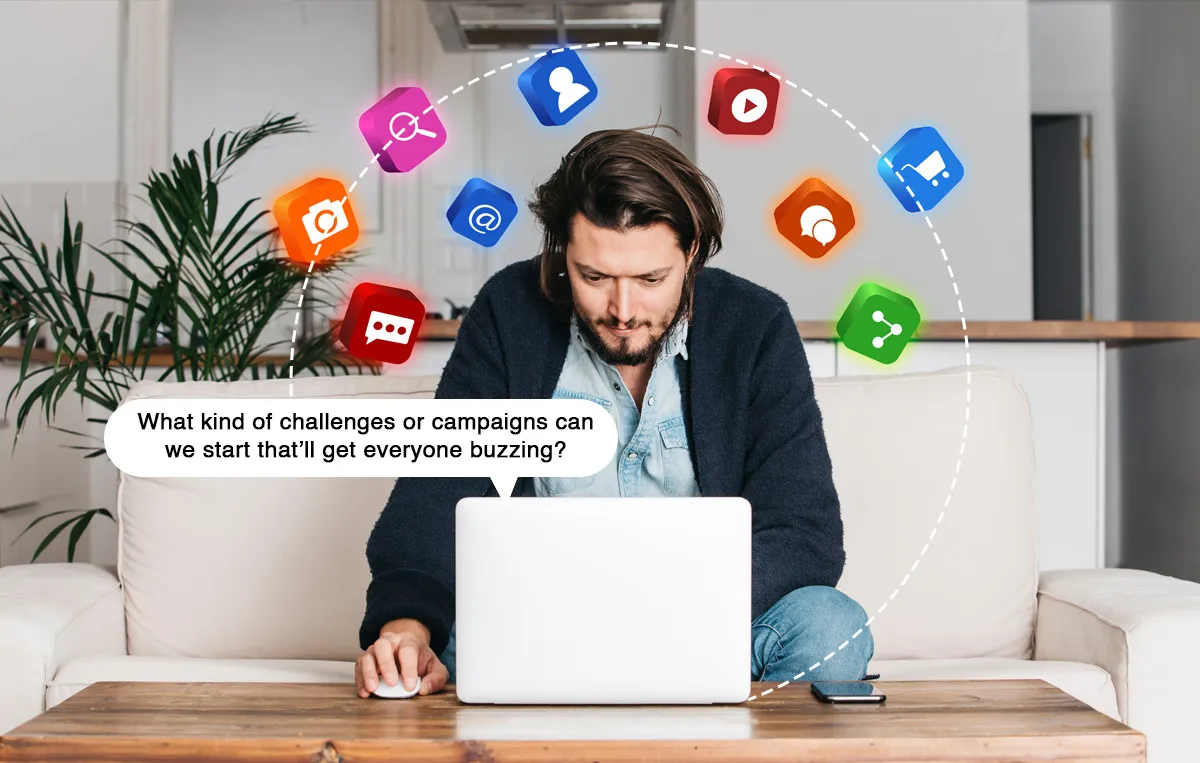
Manage social media effortlessly.
- Trial Begins Immediately
- No CC Required
- Change Plans Anytime
- Cancel Anytime
Start Your 14-Day Free Trial
Top Features
Tools & Templates
- © 2025 SocialPilot Technologies Inc. All Rights Reserved.
- Privacy Policy & GDPR
- Terms of Service
- Cookie Settings
- Follow us :
- Digital Marketing
- Facebook Marketing
- Instagram Marketing
- Ecommerce Marketing
- Content Marketing
- Data Science Certification
- Machine Learning
- Artificial Intelligence
- Data Analytics
- Graphic Design
- Adobe Illustrator
- Web Designing
- UX UI Design
- Interior Design
- Front End Development
- Back End Development Courses
- Business Analytics
- Entrepreneurship
- Supply Chain
- Financial Modeling
- Corporate Finance
- Project Finance
- Harvard University
- Stanford University
- Yale University
- Princeton University
- Duke University
- UC Berkeley
- Harvard University Executive Programs
- MIT Executive Programs
- Stanford University Executive Programs
- Oxford University Executive Programs
- Cambridge University Executive Programs
- Yale University Executive Programs
- Kellog Executive Programs
- CMU Executive Programs
- 45000+ Free Courses
- Free Certification Courses
- Free DigitalDefynd Certificate
- Free Harvard University Courses
- Free MIT Courses
- Free Excel Courses
- Free Google Courses
- Free Finance Courses
- Free Coding Courses
- Free Digital Marketing Courses
Top 5 Influencer Marketing Campaigns & Case Studies [2025]
Imagine a world where traditional advertising takes the backseat and authentic voices drive the narrative. Influencer marketing is where authenticity intersects with massive reach to create campaigns that garner attention and drive action.
In this blog, we unravel five case studies of influencer marketing, showcasing how diverse brands have harnessed this approach to achieve remarkable outcomes. From fashion giants to tech leaders, these stories are not just about marketing; they’re about creating connections, sparking conversations, and engaging audiences in ways that traditional methods cannot.
Related: Influencer Marketing Pros & Cons
Case Study 1: Aloft Hotels’ Influencer Marketing Campaign
Company: Aloft Hotels
Aloft Hotels set out to position itself as the preferred hotel brand for those passionate about music, both creators and fans. The objective was to generate influential content led by musicians that would resonate with Aloft’s key demographic, known as ‘self-expressers’. This initiative also highlighted the brand’s commitment to supporting up-and-coming music talent. The content needed to be lasting and versatile across various digital channels.
Aloft Hotels collaborated with Universal Music Group to launch a tour spotlighting rising stars in the music scene, strategically set in music-rich cities. The cornerstone of this campaign was “EMERGING,” a show hosted by Karli Henriquez, chosen for her alignment with the brand’s focus on music and technology. The series included five episodes showcasing an artist’s path, an interview, and their performance. The content strategy was multifaceted, featuring short social media teasers, Instagram behind-the-scenes content, and full episodes on YouTube. The aim was to merge genuine storytelling with extensive digital outreach seamlessly.
The campaign generated impressive results:
- 14,279,200 overall video impressions
- 28,784 clicks
- Total Organic Impressions: 1.27M
- Total artist impressions: 7,314,240
- Total artist engagements: 245,900
Key Learnings:
- The Importance of Authenticity and Relevance: Choosing an influencer (Karli Henriquez) who aligns well with the brand’s ethos and the target audience’s interests.
- Content Versatility: Customizing content to fit various digital platforms for enhanced reach and interaction.
- Strategic Collaborations: Partnering with organizations like Universal Music Group to boost credibility and reach relevant audiences.
- Focus on Measurable Results: Having clear, quantifiable metrics to evaluate a campaign’s success on which future strategies can be based.
- Long-term Connections: Establishing ongoing relationships with influencers and artists for enduring benefits beyond the immediate campaign outcomes.
Case Study 2: Adobe Premiere Pro’s Influencer Marketing Campaign
Company: Adobe Premiere Pro
Adobe’s mission was to familiarize the emerging generation of video editors and filmmakers with the capabilities of Premiere Pro. The challenge lay in differentiating Premiere Pro in a market crowded with free and less sophisticated editing tools, providing an enticing reason for these creatives to opt for Premiere Pro.
Adobe initiated a competition in collaboration with the music group Imagine Dragons. This contest granted participants access to the band’s “Believer” track and unedited music video clips exclusively for editing via Premiere Pro. This innovative strategy, enhanced by a $25,000 prize and widespread promotion across diverse social media channels, was designed to attract experienced professionals and young, aspiring creators. The global campaign offered the contest and resources in 11 different languages, leveraging the extensive fan base of Imagine Dragons and Adobe’s strategic social media outreach.
- Global reach of 1.5 billion fans through social engagement and earned media.
- 677k visits to the contest microsite from 106 countries.
- 80,000 downloads of video footage resulted in 10,000 comprehensive video submissions from creators across 28 countries.
- Premiere Pro trial – 13K downloads
- Significant engagement from young creators – 18-25 year olds got in about 64% of submissions.
This campaign demonstrates the effectiveness of combining influencer collaboration with creative, participatory challenges. Key insights include:
- Leveraging Popular Influencers: Partnering with Imagine Dragons provided instant appeal and broad reach.
- Engaging Content Offering: Providing raw footage for editing offered a unique, hands-on experience with the product.
- Global and Multilingual Approach: Localizing the contest maximized global participation and inclusivity.
- Targeted Multi-Platform Marketing: Utilizing various social media platforms ensured a wider and more effective reach.
- Fostering Community Engagement: The contest format encouraged active participation, fostering a community of young, creative users around Adobe Premiere Pro.
Case Study 3: Michael Kors The Walk Influencer Marketing Campaign
Company: Michael Kors
Michael Kors set out to attract a new audience and highlight their signature handbag styles through “The Walk,” an all-encompassing street-style initiative. The key challenge was to incorporate a variety of talents in a way that appealed to a wide-ranging audience, capitalizing on the street-style photography trend and spurring customer engagement using the hashtag #SidewalkSpotted.
This digitally-centered and shoppable campaign featured prominent figures like Solange Knowles and Sofia Richie. It revolved around an engaging online hub displaying both videos and User-Generated Content (UGC), with fans showcasing their Michael Kors ensembles tagged with #SidewalkSpotted. Renowned street-style photographer Tommy Ton captured the campaign, which included a mix of events like “Michael Kors The Walk: Shanghai” to foster interactive audience participation. The campaign remained vibrant by regularly introducing fresh faces and fashion styles by harnessing social media platforms such as Instagram, YouTube, and Facebook, and tapping into the influencers’ substantial social influence.
- Generated 137 million impressions, with 40% from Instagram.
- #SidewalkSpotted featured in over 1,000 Instagram posts.
- The Shanghai event alone amassed 64 million impressions from brand channels and an additional 23 million from influencers.
Michael Kors’ campaign underscores the power of integrating influencer reach, user-generated content, and global events to enhance brand engagement and refresh content for sustained audience interest.
Related: Branding vs. Marketing Strategy
Case Study 4: Dunkin’ Donuts’ Influencer Marketing Campaign with Liverpool F.C.
Company: Dunkin’ Donuts
Objective/Challenge:
As the Official Coffee Partner of Liverpool F.C. (LFC), Dunkin’ Donuts aimed to amplify awareness of this partnership in the United States, where soccer isn’t as widely followed. The objective was to connect with American LFC fans and showcase the harmonious relationship between Dunkin’ Donuts and LFC.
Under the banner of ‘The Big Thank You,’ a component of the ‘ReDDer Together’ initiative, Dunkin’ Donuts celebrated the union of LFC and their brand. The campaign involved contacting U.S.-based LFC Supporter Clubs to identify the most ardent fan. Kacey Keller, the selected fan, was treated to a surprise live Skype call from LFC players. This personal approach to engaging with dedicated fans demonstrated Dunkin’s deep understanding and appreciation for the LFC fanbase. The narrative of this campaign was broadcast across social media channels like Facebook and Twitter, featuring filming locations at the winner’s home and Anfield, the home stadium of LFC.
- The campaign’s video achieved over 1.2 million views on Twitter and Facebook.
- It notably exceeded expected performance metrics, recording 855,000 impressions and reaching an audience of 3.3 million
The Dunkin’ Donuts campaign underscores the value of genuine engagement with passionate, niche communities. By acknowledging and celebrating the enthusiasm of LFC fans, Dunkin’ Donuts effectively bridged two distinct brands.
Case Study 5: American Rag’s Influencer Marketing Campaign
Company: American Rag
American Rag, aimed to promote their holiday collection featuring humorous onesies and ugly sweaters. It was available only at Macy’s. The challenge was to turn this seasonal gag gifting into a shareable, socially-driven experience, targeting millennials who prefer online inspiration over traditional mall visits.
Understanding the shift in shopping habits, American Rag partnered with popular influencers like Liza Koshy, David Dobrik, KrispyShorts, and Matt Cutshall. These influencers were selected for their resonance with American Rag’s target audience and their ability to create engaging, humorous content. They crafted comedic vignettes showcasing the collection in their natural, authentic social media feeds. Additionally, American Rag sent oversized holiday gift boxes containing the collection to 50 influencers, comedians, and celebrities, aiming to generate organic, viral content.
- Video views – 2,211,416
- Engagements – 588,894
- Instagram followers – 3% increase
Influencer-driven content was well-received, with enthusiastic audience reactions. The visibility gained from high-profile influencers like Logan Paul and Lele Pons significantly boosted the collection’s popularity, leading to a complete sell-out before the season’s end.
American Rag’s campaign highlights the effectiveness of leveraging influencer marketing with relatable, humorous content to engage millennials. Authenticity in influencer partnerships and creative, shareable content can significantly amplify a brand’s reach and drive product demand, particularly in a digital-first consumer environment.
Related: Motivational Marketing Quotes
These examples underscore the importance of authentic engagement, creative content, and a deep understanding of the target audience. As the digital landscape continues to evolve, influencer marketing remains a crucial strategy for brands looking to connect with consumers in meaningful, memorable ways. By applying the key learnings from these case studies, businesses can craft successful influencer marketing campaigns that resonate with their audience and drive tangible results.
- Course vs Program: What is the difference? [2025]
- Top 5 B2B Marketing Case Studies [2025]
Team DigitalDefynd
We help you find the best courses, certifications, and tutorials online. Hundreds of experts come together to handpick these recommendations based on decades of collective experience. So far we have served 4 Million+ satisfied learners and counting.
How to Measure the Success of Your Marketing Leadership [2025]

Top 20 Books for CMOs & Marketing Leaders [2025]

Top 30 VP of Marketing Interview Questions and Answers [2025]

Top 50 Marketing Executive Interview Questions And Answers [2025]

Why Move from Digital Marketing to Digital Transformation? [2025]

Top 15 Critical Skills that a CMO Must Have [2025]
- Creative Automation
- Influencer Marketing
- Measurement & Reporting
- Product Experience
- UGC Marketing
- Visual Commerce
- Automated Creatives
- Competition Benchmarking
- Content Hub
- Enhanced Product Content
- Influencer & ROI Analytics
- Influencer Campaigns
- Instagram Analytics
- Product Content Syndication
- Shoppable Content Galleries
- Social Display
- Case studies
Does Influencer Marketing Really Work? These 10 Case Studies Shout: YES!
We can be all talk for a month, but no theory compares to the inspirational drive that a good example can bring. Today’s 10 influencer marketing case studies are going to reveal the practical side of a social media campaign and how it reaches the sweet spot of virality.
1. Encapsulate Brand Culture in One Inspirational Trademark
Nike has remained true to its essence since 1988. Shout: Just Do It! and your train of thoughts takes a short turn to hard training, sculpting your body through sweat, accomplishment, Nike, champion, active lifestyle.
Nike transported its trademark to modern times, without spilling any bit of its meaning, in the form of a hashtag: #justdoit. The official Instagram account tells stories of its fitness ambassadors. Each post reveals one insight that has shaped characters into progressive athletes.

In their turn, users and influencers create content organically inspired by Nike’s perennial invitation to movement. The sports brand activates micro-influencers mostly, even those with as few as 10k followers. Being part of Nike’s community of sports leaders incentivizes content creators to accept rewards other than financial.
2. Win the Spotlight in the Competitive Luxury Landscape alongside Influencers
DSW is a small discount shoe brand with a big dream: to be as sparkly and empowering as any of its high-end competitors. Therefore, the retailer skipped traditional marketing and unlocked the influence of content creators.
However, it’s not just about shoes. The winning tweak was for DSW to elevate the fascination for footwear with the ubiquitous desire for traveling. As such, the brand reached out to influencers active mostly on the adventurous side of Instagram.

By partnering with big accounts complementary to its industry, DSW tapped into unconventional sources of new leads. Back in the third quarter of 2018, the 17.2% increased revenue stood proof for the success influencers produced for DSW. So far, our influencer marketing case studies underline the power of influencers of converting leads into customers.
3. Ask the Community (Not Your Intuition) What They Want You to Create
Prices for all budgets, innovative designs, flamboyant apparel – that’s how H&M intended to revigorate its image when it launched the Nyden collection in 2018. However, instead of predicting trends, the fast-fashion retailer is asking their community for style ideas.
Under the #HMxME hashtag, H&M devised a whole new production strategy. This keyword alone generated more than 286,000 posts, an impressive number that indicates a campaign success.
The innovative H&M plan goes like this. First, influencers receive prototypes that they are allowed to show in their Stories. For each post, they ask their audience to answer polls regarding looks, colors, features, and details.
Afterward, H&M gets feedback from each influencer, rounding up clear guidelines on how to improve their new designs. By using influencers for data collection, H&M rests assured that every piece they create has already a fan base ready to spread the buzz and generate a shopping spree.

On the downside, this level of transparency allows any prying eyes to see what audiences love and replicate their looks. On the other hand, H&M is known for its fast-paced factories. This enables H&M to always be the first to launch a new collection.
4. Unleash the Entire Product Awesomeness
Renowned brand Hugo Boss made waves when it launched a challenge around its Boss perfume featuring Marvel star, Chris Hemsworth. The video concept was anything but ordinary.
Viewers witnessed how Chris plunged into the ocean waves on a surfboard. All this time, the dashing actor was wearing a smart black suit. At the end of the clip, Hugo passed the challenge to all men with a desire to do great things in style.
Eventually, this adrenaline-pumping commercial started a #SuitChallenge movement which resulted in hundreds of resourceful images. Shortly after, Instagram saw a slew of out-of-the-box visuals. Men started wearing suits but on tennis or basketball fields, in the wilderness, on paddleboards, doing parkour, and in other uncomfortably perfect backgrounds.
Usually, an expensive suit and the salty ocean water don’t work together. However, the Boss influencer marketing campaign managed to pull this off in the most original way and inspired men for greatness.
5. Steal a Ferarri-Level Macro-Influencer for Your Ambassador Program
Automotive market Autotrader dreamt big so the company looked for a macro-influencer. Doug DeMuro is the number one influencer in the automotive industry. He’s funny, entertaining, but he never neglects core details that make up the character of a car.
In the past, the reviewer shook hands on some amazing partnerships with the likes of Porsche and Ferarri. However, Autotrader managed to add the Doug empire to its portfolio of brand ambassadors.
Their partnership covered waves of content on multiple-channels: website, Instagram, blog, YouTube, etc. The company even assigned a new Autotrader page to Doug called Oversteer . All in all, our influencer marketing case studies show us that one macro-influencer with a high compatibility score can raise more awareness than any ad.
6. Give Influencers Free Rein to Make Your Startup Worldwide Known
If you have heard so far about drones and their enchanting aerial captures, it is all thanks to DJI. Chinese brand entered the mainstream by taking full advantage of influencer campaigns.
With each new product launch, DJI collaborated with new influencers with a fresh vision on life. So far, the strategy was to equip creators with DJI only video tech. Concept, location, details were all up to account owners to decide.

Consequently, the brand unlocked an endless source of unique visuals. Each entry proves that DJI drones and cameras have amazing features to record ambitious productions.
7. Humanize Products through the Innocent Eyes of a Famous Pet
One of our 10 influencer marketing case studies brings to our attention the impact the presence of a dog can create for a brand. Mercedez Benz skipped Instagram and collaborated instead with YouTube canine celebrity, Loki.
Together with his master, Loki starts an adventure in Colorado. They take to the secluded streets hidden under a Christmassy layer of snow on a Mercedez Benz. Thanks to the immersive 360° format, viewers feel like they are part of the experience.
The video charm springs from the story narrated in the background, uplifting song, mesmerizing view, and the happiness of the furry friend. In contrast to traditional ads and commercials, the advertised product runs silently in the background. There hovers just a hint to its quality, and what we see is a fulfilling moment in the life of two best friends.
8. Reinventing the Mattress One Snooze at a Time
Casper was the first mattress company to bring some fresh air into this old-fashioned industry. Instead of store distributors, the brand mails mattresses in a box. Instead of traditional ads and stiff CTAs, Casper worked with influencers on growing awareness.
First of all, the new approach to advertising included a curated list of young influencers of hip taste. Their requirements for YouTube and Instagram content were limited to authenticity and transparency.

Secondly, Casper gave influencers more power by creating customized coupons for them. This way, creators receive one more resource to energize loyalty levels across their communities. On top of that, this is a seamless way to promote a product and naturally bring it to their audiences’ attention.
Through these reviewers outside the mainstream, Casper managed to raise brand awareness and strengthen its position as to veteran competitors. In a span of two years, Casper was ranking higher than other established names in the industry.
9. Influencer Campaigns Work Their Magic for B2B Too
Our influencer marketing case studies reveal a fertile environment for B2B promotion as well. Software company SAP develops solutions solely for enterprises. However, this didn’t stop this brand from managing a strong presence on social media.
Unlike B2C practices, their list of influencers contains only top names in decision-making positions. Consequently, their influencer marketing consists of executives, CEOs, and even academics and consultants.
SAP visioned an organic method to make its software solutions visible to a wide professional audience. Their idea focused on invitations for specialists and experts to industry events. Once there, influencers populated their content plans with live Facebook streaming, interviews, and YouTube talks.
In its turn, SAP was able to repurpose influencer-generated content for its own Facebook, Twitter, and YouTube accounts. Eventually, the B2B corporation kept in touch with enough specialists to build its own program with SAP Technology Ambassadors.
10. Your Brand Cares
To begin with, BoxedWater based its entire business on an eco-friendly concept that links the brand to altruistic traits. Drinkable water, a completely recyclable package, and raw materials taken from certified forests are key ingredients that can spark a sustainable movement.
By positioning themselves as environmental activists, BoxedWater speaks directly to the two generations that care: Millennials and Generation Z . Moreover, the brand keeps true to its philanthropic efforts at all times.

After a campaign of repopulating forests, BoxedWater continues in this direction with a #NoPlasticPledge. In a word, the company challenged users to 30 days of no plastic usage. To encourage them to stay on track at all times, the company sent a free kit to any new entry consisting of stickers, a T-shirt, a tote bag, and a pledge bracelet.
These type of humanitarian projects on social media usually boosts visibility. On top of that, they create quality customers as they tend to stay loyal to those brands that display authenticity and social engagement.
All in all, our 10 influencer marketing case studies reveal how flexible marketers can be on social channels to drive results. Personalized coupons, an inspirational trademark, one extremely niche macro-influencer, and ambassador programs are just a few of the strategies brands can enact organically to attract new leads.
Let us know in the comments what campaign example applies to your business the most! How would you improve it?
Similar articles
Join our informed community
Next time Influencer Marketing makes a move, you'll be the first to know!
Sephora: Influencer Marketing Case Study
See how Lefty helped Sephora Collection achieve a +1013% ROI on TikTok with micro and macro influencers.
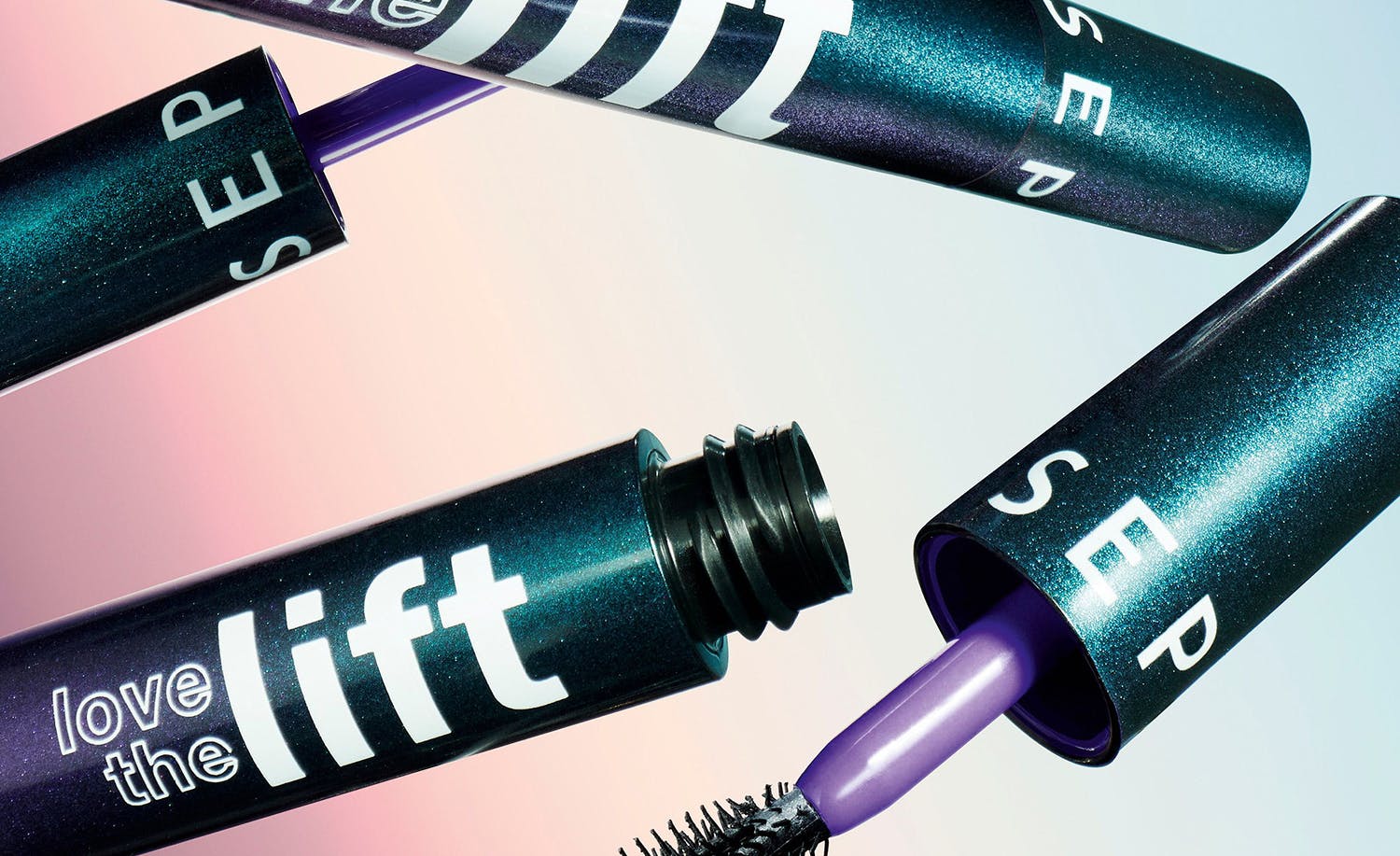
Content Table
Sephora collection’s beginnings to a force in the global market, overcoming global influencer marketing campaign hurdles , optimizing for influence: sephora collection's strategic goals with lefty.
- Streamlining Campaign Management with Precise Analytics
Sephora Collection’s Strategic Implementation of Lefty’s Features
Achieving increased visibility and roi with lefty's advanced analytics.
- Sephora Collection's Global Influencer Marketing Success: Precise Tracking and Seamless Automation
Since its founding in 1969, Sephora has been at the forefront of beauty retailers. It's known for its prestige products and is considered a diversity leader in the beauty industry. Sephora has nearly 340 brands, and its private label, Sephora Collection, spans beauty, skincare, and hair care.
Sephora Collection exercises meticulous control over every aspect, from product presentation and in-store displays to communication strategies and influencer marketing.
The brand has always quickly adapted to the changing landscape of influencer marketing, recognizing its significant impact on market share. This proactive approach is a testament to Sephora Collection's commitment to staying ahead in the online and offline beauty industry.
Sephora Collection faced several challenges while managing a global influencer campaign. One of the main obstacles was catering to diverse market needs, which made standardization complex because different regions required customized approaches. Monitoring organic engagement was more complicated than paid campaigns, leading to difficulty in tracking it and identifying qualified influencers. Lastly, identifying and managing relationships with influencers worldwide was time-consuming and demanded significant resources.
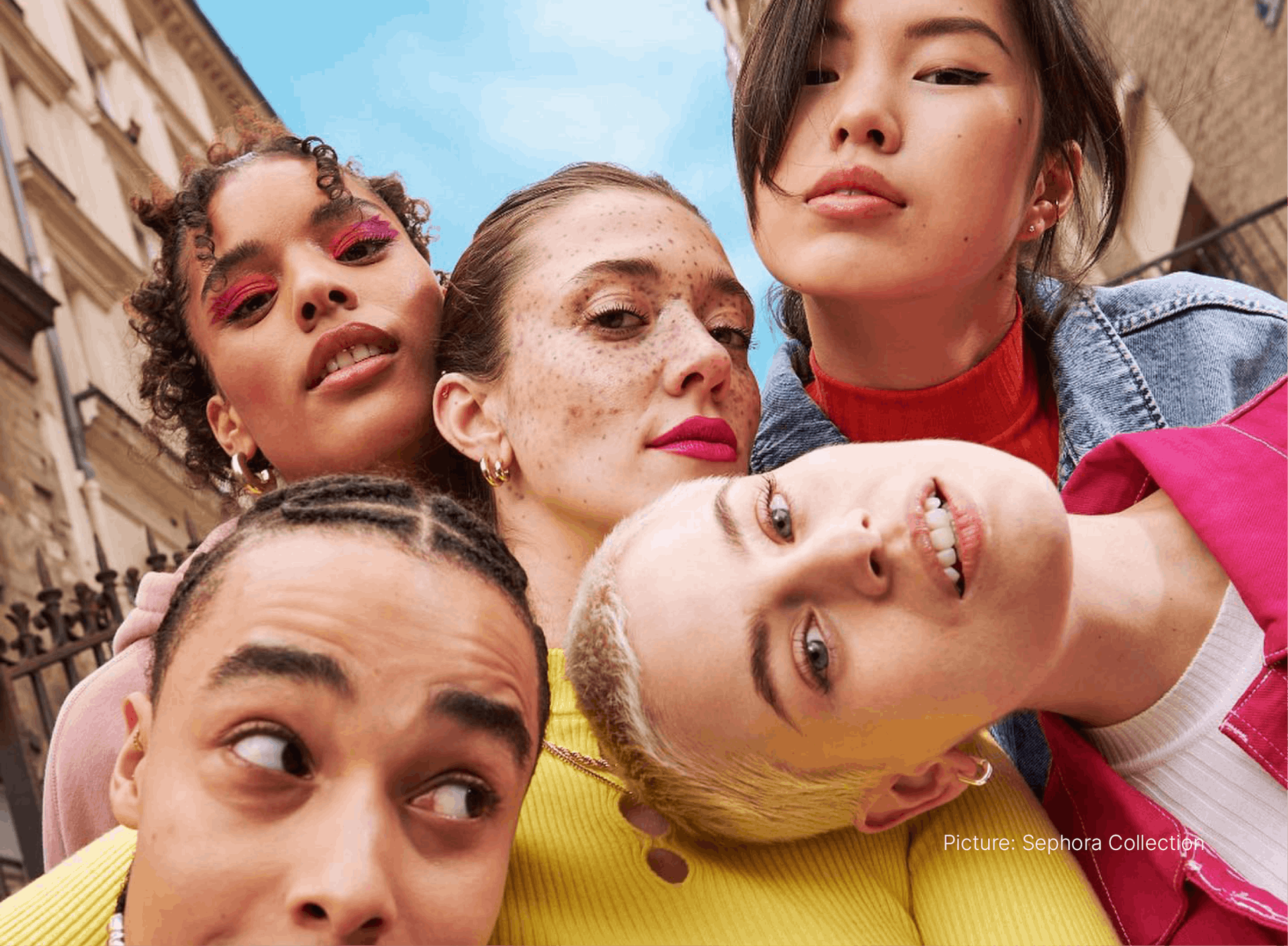
SEPHORA Collection sought to achieve the following through its partnership with the leading influencer marketing platform Lefty:
- Global Influencer Marketing Campaign Management: Launch and manage worldwide influencer campaigns efficiently.
- KPI Tracking: Monitor key performance indicators to ensure investment returns exceed expenditures.
- Engagement Verification: Confirm influencer engagement rates to maintain high standards of campaign quality.
- Consistent Brand Messaging: Provide uniform guidelines across all markets for consistent branding.
Streamlining Influencer Marketing Campaign Management with Precise Analytics
Lefty provided several solutions to address the challenges that Sephora Collection faced. The platform enabled centralized campaign management , allowing them to manage multiple campaigns across different social media networks from a single platform. This simplified coordination across various countries and automated campaign tracking and KPI reporting help to save time and improve workflow.
The platform also facilitated immediate tracking of engagement, Earned Media Value ( EMV ), ROI, and other performance metrics to ensure that campaigns met their goals and that all influencer content was accounted for in real-time.
Lefty's tools provided enhanced influencer insights , allowing them to assess influencer engagement rates effectively and insights into influencers' audience demographics, their percentage of genuine followers, and more. This effectively aided in the selection process and internal validations.
Sephora Collection used Lefty in several key areas:
- Campaign Launch and Monitoring: Global campaigns were executed in partnership with regional Sephora Collection teams. These initiatives monitored local influencers across regions like France and the U.S. Leveraging Lefty's automated campaign tracking, Sephora Collection efficiently monitored their international campaigns and KPIs, streamlining the management of their global influencer program.
- PR Kit Distribution and Seeding Activations: The Sephora Collection team, utilized Lefty's campaign monitoring feature across various social media platforms, playing a pivotal role in evaluating the ROI of their activations through Lefty's platform. This feature was critical to the brand in assessing the performance of each region's influencer program.
Sephora Collection’s Growth on TikTok: 2021-2023
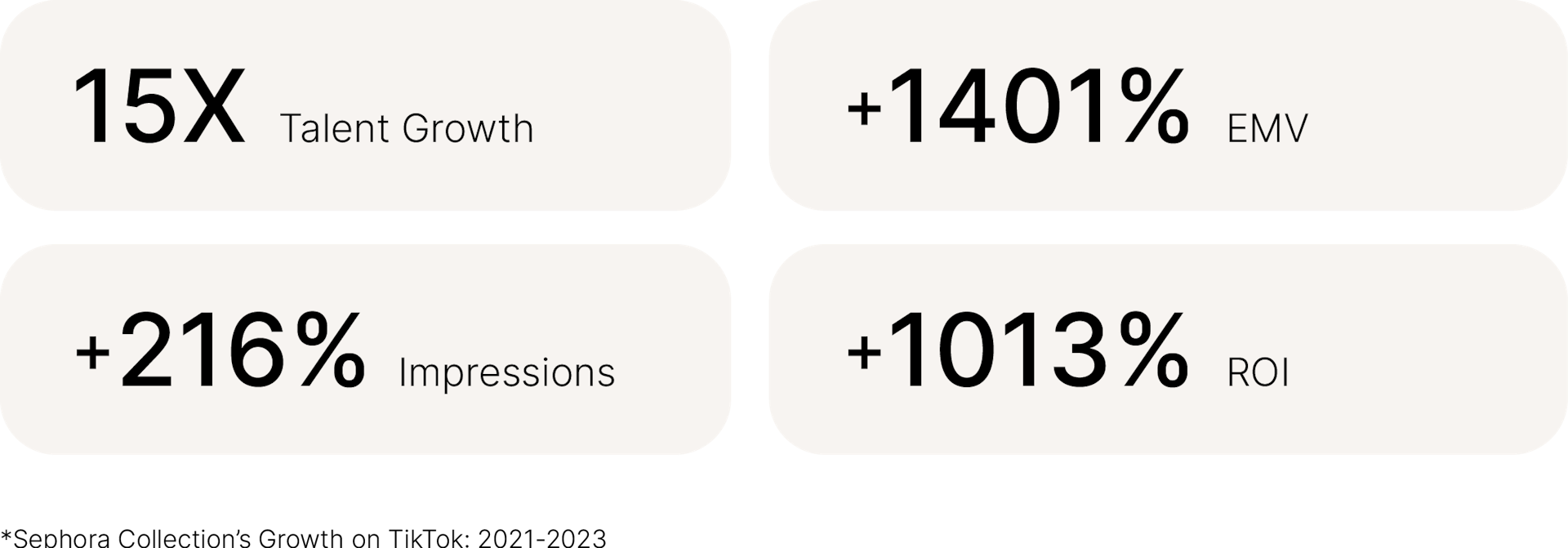
The implementation of Lefty by Sephora Collection since 2019 has led to several notable achievements:
- Streamlined Operations: The centralization of campaign management through Lefty enhanced global operations for Sephora Collection. By automating a significant portion of their global influencer marketing program, the Sephora Collection team efficiently tracked key KPIs to continually enhance their strategy.
- Optimized ROI Monitoring: Sephora Collection leveraged real-time KPI tracking to uphold a positive investment return and optimizing their marketing spend across diverse campaigns. In 2023, their strategic collaborations with micro and macro influencers led to a remarkable 1013% increase in ROI , enhancing the brand's visibility through partnerships with micro and macro influencers.
- Influencer Vetting: Lefty's influencer vetting process has been particularly valuable for Sephora. As a large company within LVMH, identifying the right influencers to collaborate with is crucial for the brand. Lefty's influencer vetting capabilities allow Sephora to target influencers based on relevant KPIs, ensuring they partner with individuals who can effectively reach their target audience and achieve campaign goals.
- Increased Visibility: Sephora Collection leveraged its comprehensive understanding of the global influencer marketing landscape and KPIs to enhance its casting strategy and nurture influencer collaborations. This strategic approach resulted in a significant boost in visibility, particularly on TikTok. Impressively, between 2022 and 2023, the Sephora Collection saw a remarkable 491% surge in its social media impressions.
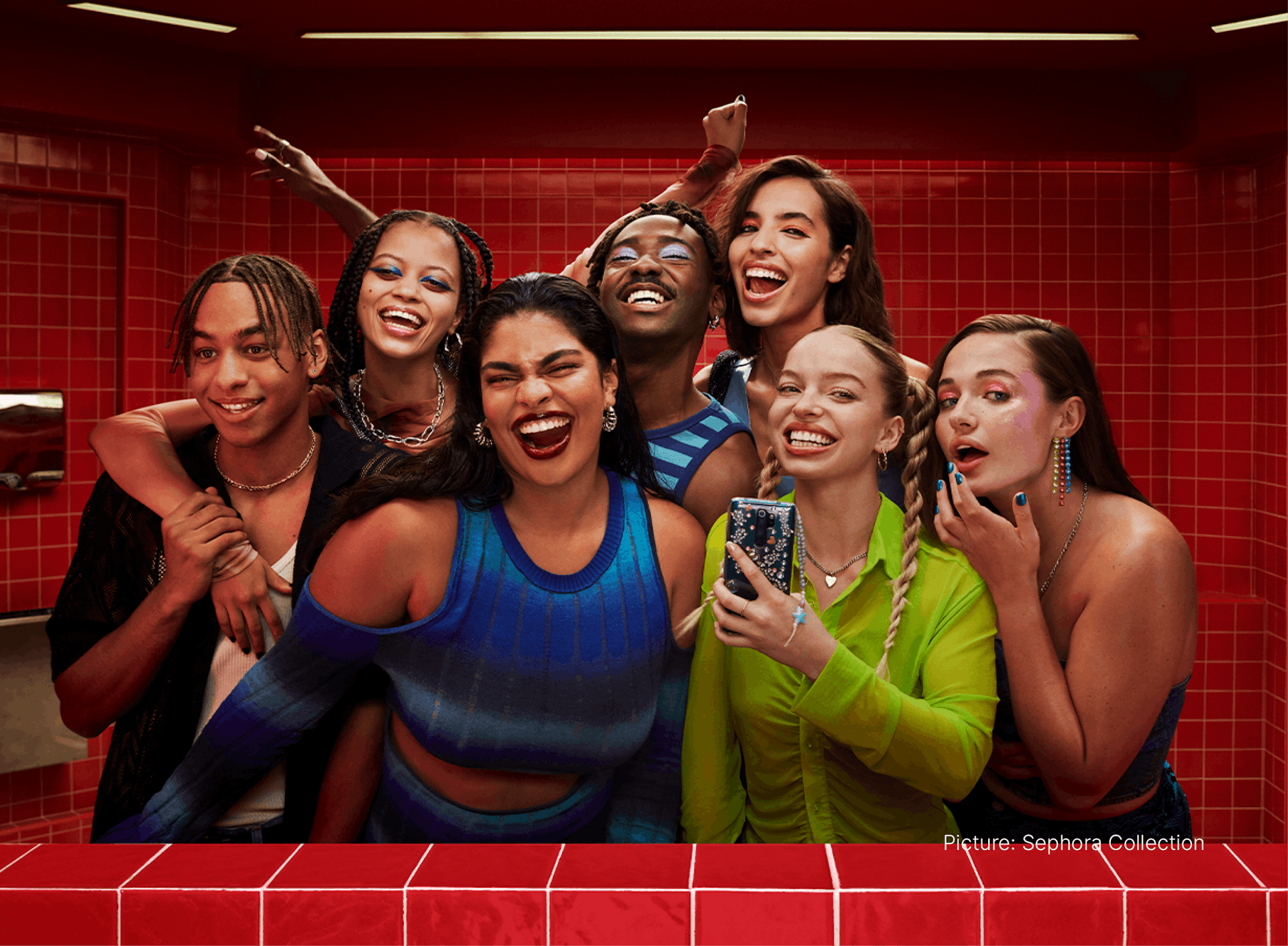
Sephora Collection's Global Marketing Success: Precise Tracking and Seamless Automation
Sephora Collection's partnership with Lefty exemplifies the effective tracking and automated reporting used in global marketing campaigns. By harnessing the power of an advanced influencer marketing platform, Sephora Collection has optimized its promotional activities and maintained stringent control over brand consistency and engagement quality worldwide. This case study demonstrates the potential for digital tools to transform global marketing strategies, providing scalable solutions that meet diverse market demands.
Download the full report, here
Schedule a personalized demo.
Tell us a few things about yourself, and we’ll show you a lot more about us.
More articles
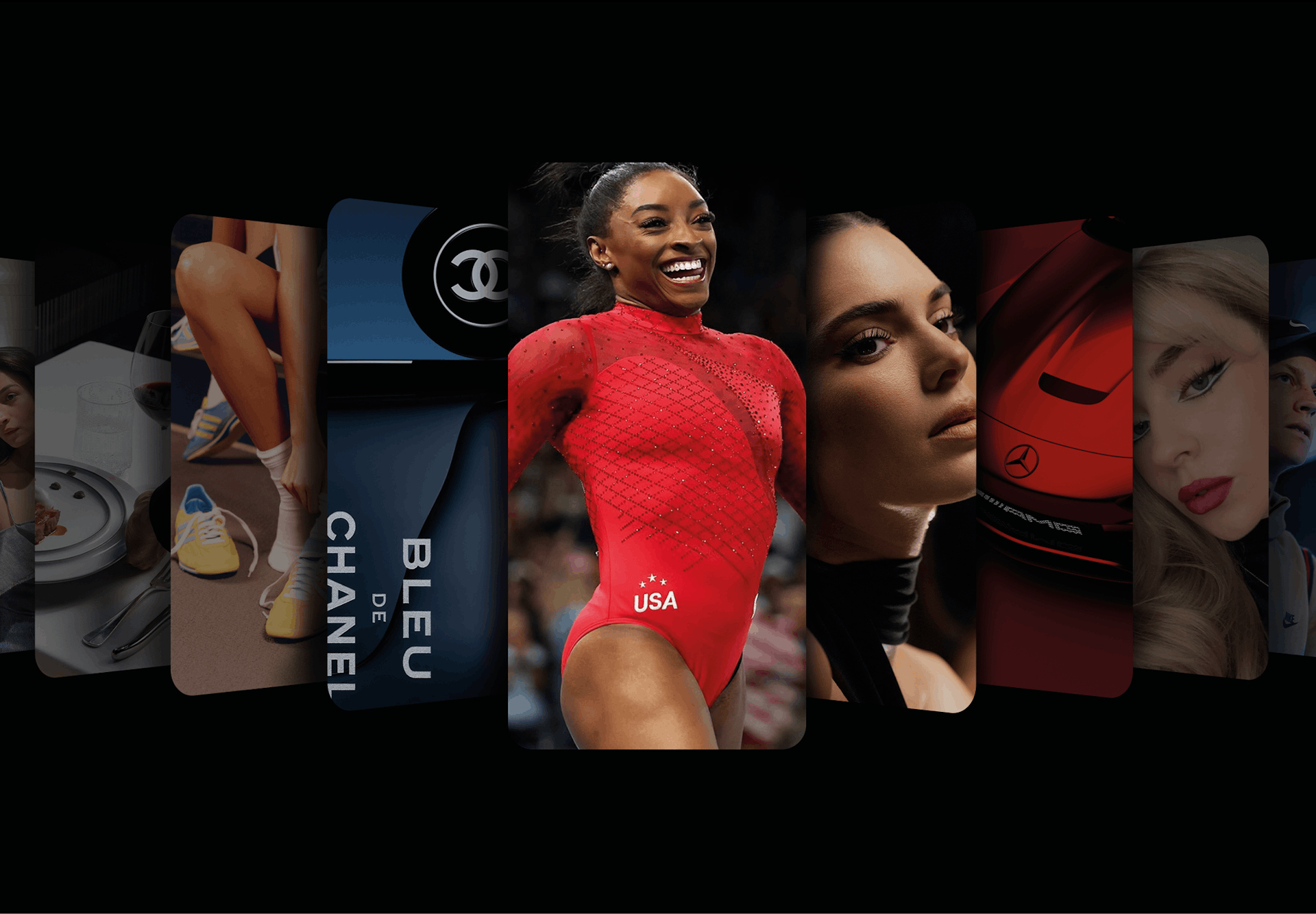
A Year in Data 2024: A Look Back and 2025 Trends Revealed
Explore key insights from Lefty's "A Year in Data 2024" report, highlighting influencer marketing trends, strategies, and innovations shaping 2025.
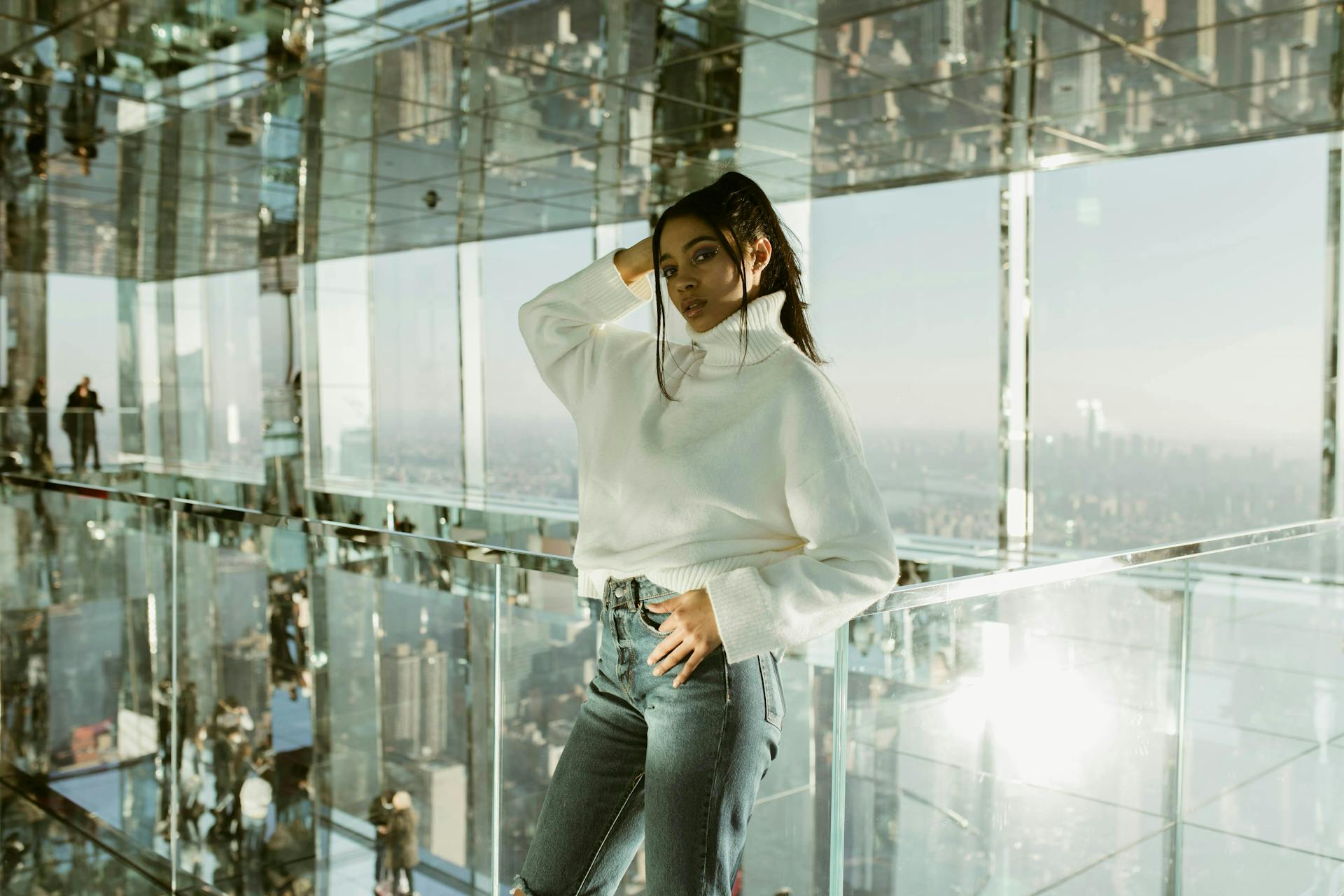
NYC Influencers: Redefining Digital Marketing with Authentic Storytelling
Discover how NYC influencers are redefining digital marketing with authentic storytelling, creative content, and global trendsetting in fashion, lifestyle, food, and more.
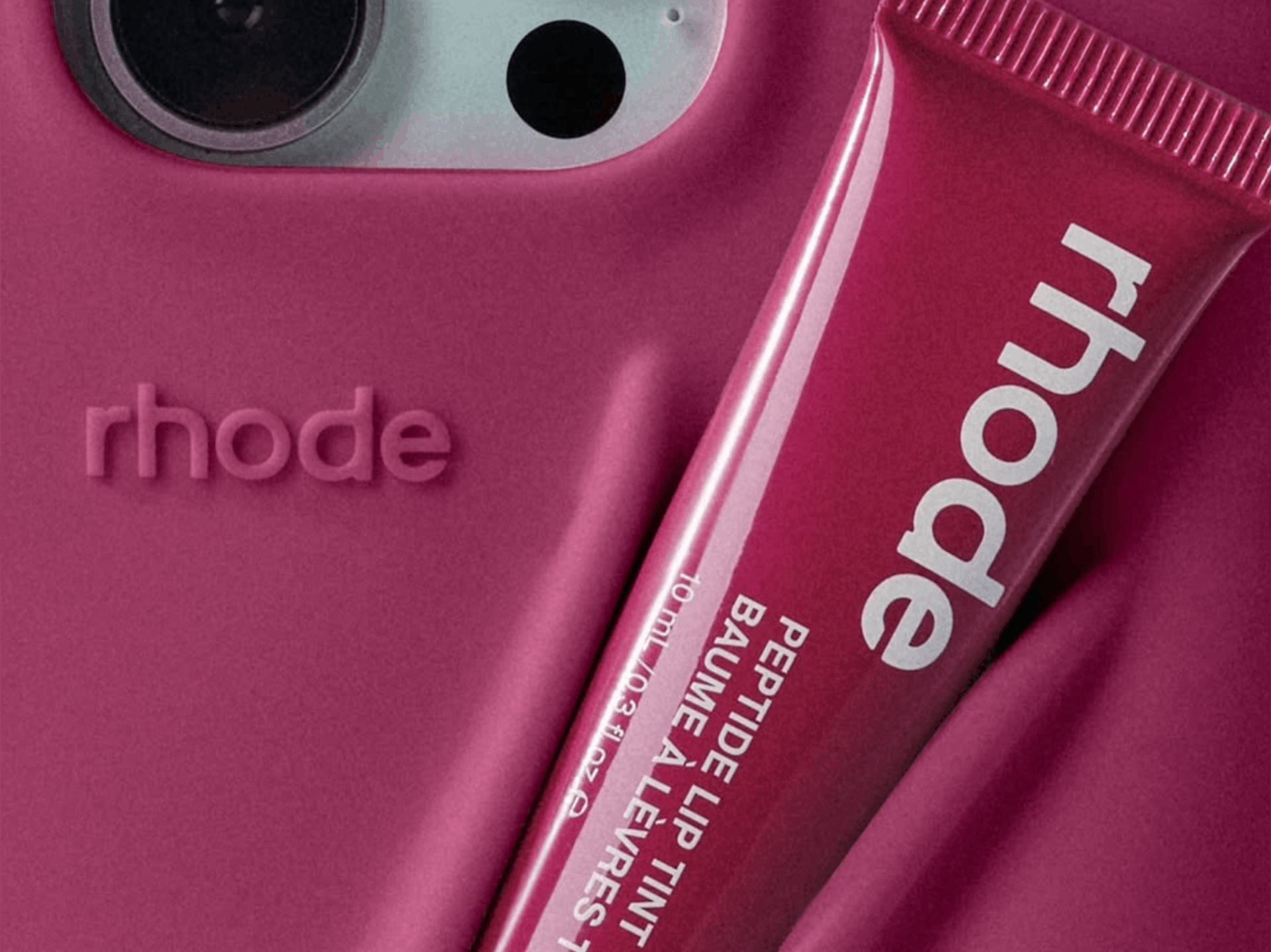
Rhode's Recipe for Success: Influencer Marketing & Affiliate Programs
Discover how Hailey Bieber’s Rhode brand became a beauty industry sensation with strategic influencer marketing and successful affiliate programs, driving growth and consumer engagement.

Curology Marketing Strategy 2025: A Case Study
Curology has transformed the skincare industry by embracing a personalized marketing strategy that resonates with its audience. By leveraging data-driven insights and innovative digital marketing techniques, Curology has successfully positioned itself in a highly competitive market. This case study delves into the key elements that have propelled Curology’s growth and customer engagement, from its tailored product offerings to strategic influencer partnerships.
In an era where consumers seek authenticity and personalization, Curology stands out by crafting meaningful connections through omni-channel marketing. Their approach not only enhances brand loyalty but also improves overall customer satisfaction. The insights shared in this article illustrate how Curology navigated challenges and seized opportunities to become a leader in prescription skincare.
Key Takeaways
- Curology’s marketing strategy is centered around personalization and customer engagement.
- Data-driven decisions play a crucial role in optimizing their marketing efforts.
- Influencer partnerships significantly boost brand visibility and credibility in the skincare market.
Curology Brand Overview
Curology is a dynamic skincare brand that focuses on personalized solutions for individuals seeking effective treatment for skin concerns. Its direct-to-consumer model allows customers to receive customized combination treatments tailored to their specific needs.
Founding and Mission
Curology was founded in 2014 by Dr. Zac Lortscher, who aimed to bridge the gap between traditional skincare and telemedicine. The mission is to provide personalized dermatological care by offering prescription treatments directly to users. Curology empowers consumers to take control of their skincare through accessible and effective solutions, without the need for in-person visits. Staying committed to enhancing the beauty of all skin types, the brand utilizes licensed dermatology providers to create tailored therapies.
Products and Services
Curology offers a range of customized products designed specifically for individual users. Their flagship service is the creation of personalized prescription creams that target various skin issues such as acne, anti-aging, and more. Each treatment is formulated based on user-submitted photos and a detailed skin questionnaire, ensuring relevance and effectiveness. Additionally, Curology provides consultation and support from licensed dermatology providers, further enhancing the consumer experience. They also sell a variety of skincare products, including cleansers and moisturizers, complementing their prescription treatments.
Target Demographics
Curology primarily targets young adults who seek effective skincare solutions tailored to their unique skin concerns. The brand appeals to tech-savvy consumers who prefer the convenience of online consultations and customizable products. Its marketing often focuses on individuals aged 18 to 30, particularly those facing challenges such as acne or premature aging. The emphasis on personalization resonates deeply with this demographic, as they value products designed specifically for their skin types and concerns. By addressing the needs of a diverse audience, Curology has successfully fostered a large community of empowered users who advocate for their personalized skincare journey.
Marketing Foundations
Curology’s marketing strategy is rooted in foundational elements that drive brand recognition and create meaningful connections with customers. It leverages brand awareness, a clearly defined core marketing message, and a compelling value proposition to stand out in the skincare industry.
Brand Awareness and Identity
Curology builds brand awareness through targeted campaigns that highlight its unique offerings. Utilizing social media platforms and digital marketing , the brand engages with a younger audience, particularly women in their early twenties.
They focus on creating a strong visual identity, incorporating recognizable colors and consistent messaging across all channels. Curology also utilizes user-generated content to showcase real customer experiences, fostering a community approach.
The brand emphasizes its personalized solutions, differentiating itself from competitors in the saturated skincare market. By connecting with its audience emotionally, Curology cultivates loyalty and encourages word-of-mouth referrals.
Core Marketing Message
Curology’s core marketing message centers on personalization in skincare. The brand communicates that its products are tailored to individual needs, setting it apart in a market often dominated by one-size-fits-all solutions.
This message is consistently reinforced through various marketing materials , including website content, social media posts, and email campaigns. Curology emphasizes the importance of customized skincare, appealing to consumers’ desires for effective solutions that cater to their unique skin concerns.
The alignment of their message with consumer needs establishes trust and credibility, ensuring that potential customers feel understood. Through clear and relatable language, Curology invites customers to take part in a personalized skincare journey.
Value Proposition
Curology’s value proposition focuses on providing tailored skincare solutions that are both accessible and effective. The brand offers a subscription model, simplifying the purchasing process while ensuring customers receive products suited specifically to their skin type.
By leveraging technology and data, Curology enhances the personalization of its services. Customers undergo an online consultation where they receive custom prescriptions, which are crafted by licensed dermatologists.
This innovative approach not only addresses common skincare issues but also enhances customer experience. The combination of expert guidance and convenience forms a compelling reason for consumers to choose Curology over traditional retail options.
Digital Marketing Strategy
Curology employs a multifaceted digital marketing strategy to enhance customer engagement and drive growth. This strategy effectively integrates social media, content marketing , and email marketing, aligning with their personalized approach to skin care.
Social Media Approach
Curology’s social media strategy hinges on community building and customer engagement. By utilizing platforms such as Instagram and Facebook, they engage with their audience through visually appealing content and personalized stories.
The brand employs targeted advertising to reach specific demographics, maximizing their ad spend. Curology leverages user-generated content, allowing satisfied customers to share their success stories. This fosters authenticity and builds trust among potential customers.
By actively interacting through comments and messages, they strengthen their community and encourage customer loyalty.
Content Marketing
Content marketing is central to Curology’s strategy, focusing on educational content that resonates with their target audience. They produce valuable resources such as blog posts and video tutorials that address common skin care concerns.
This approach positions Curology as an authority in dermatological knowledge and empowers customers with information. Additionally, the use of SEO techniques helps ensure that their content ranks well in search engines, increasing visibility.
By focusing on relatable skin care topics, they enhance customer engagement and nurture an informed community around their products.
Email Marketing
Curology employs a robust email marketing strategy using Iterable’s growth marketing platform to deliver personalized content directly to subscribers. They segment their email lists to ensure targeted messaging, which significantly boosts open rates and engagement.
The brand’s emails often include tailored recommendations based on user preferences and skin types. This personalized touch leads to better customer satisfaction and increases the likelihood of repeat purchases.
Additionally, regular newsletters keep subscribers informed about new product launches and skin care tips, maintaining ongoing communication and brand loyalty.
Influencer Partnerships and Outreach
Curology’s marketing strategy effectively utilizes influencer partnerships to reach a broader audience and enhance brand loyalty. Collaborating with influencers allows Curology to not only promote its personalized skincare solutions but also to create a sense of community around the brand.
Collaboration with Influencers
Curology partners with a diverse range of influencers who resonate with its brand values. This collaboration is essential in the dermatology space, where authentic engagement is crucial. By selecting influencers who genuinely love the products, Curology ensures credibility and relatability.
Influencers share their skincare journeys on platforms such as Instagram and TikTok, providing real-life testimonials. These partnerships often showcase before-and-after results, enabling prospective customers to visualize the product’s impact. Additionally, Curology considers the audience demographics of each influencer to enhance targeted outreach.
Influencer Impact on Brand Marketing
The impact of influencer marketing on Curology’s brand reputation is significant. Influencers contribute to building trust and fostering relationships with their followers. When influencers promote Curology, they highlight the importance of personalized skincare, addressing individual needs and preferences.
The diverse representations in influencer partnerships also reflect Curology’s commitment to inclusivity. By engaging influencers from various backgrounds, the brand appeals to a broader audience. This strategy helps dismantle stereotypes around skincare and encourages a community centered on skin health and self-love.
Measuring Success of Influencer Campaigns
Evaluating the effectiveness of influencer campaigns is critical for Curology’s ongoing success. Key performance indicators (KPIs) such as engagement rates, conversion rates, and follower growth provide insights into campaign impact.
Curology tracks social media metrics closely, analyzing likes, shares, and comments on influencer content. Customer feedback also aids in assessing whether campaigns resonate with the audience. Moreover, Curology implements unique discount codes for influencer followers to measure direct conversions, providing tangible data on campaign success.
By continually refining its influencer marketing strategy, Curology ensures sustained growth and community engagement in the competitive skincare market.
Omni-Channel Marketing Presence
Curology has strategically blended various marketing channels to enhance customer engagement and expand its reach in the skincare market. By integrating online and retail strategies with a personalized approach, the brand effectively addresses diverse consumer needs while maintaining a cohesive experience.
Combination of Online and Retail Strategies
Curology leverages both online and retail platforms to maximize visibility and accessibility. The brand’s telemedicine model allows customers to receive personalized skincare consultations from the comfort of their homes. This online presence is complemented by collaborations with pharmacies, enhancing retail reach.
Through targeted digital marketing campaigns , Curology captures the attention of potential customers across social media and search engines. The combination of these channels results in a seamless customer journey, ensuring that potential users can discover and engage with the brand easily.
Personalized Customer Experience
Personalization is at the heart of Curology’s marketing strategy. The brand utilizes data-driven insights to tailor product recommendations to individual customer needs. This strategic approach not only enhances customer satisfaction but also boosts loyalty.
Curology’s emphasis on personalized communication fosters stronger relationships with users. By sending tailored messages and product updates through email and app notifications, Curology reinforces its commitment to meeting each customer’s unique skincare needs. This adaptability enhances engagement, ensuring customers feel valued and understood in the skincare market.
Data-Driven Marketing and Analytics
Curology actively employs data-driven marketing to make informed decisions that enhance its brand presence and customer engagement. By leveraging analytics, it targets specific skin concerns while maximizing its marketing effectiveness .
Utilizing Data for Marketing Decisions
Curology utilizes a robust data collection process to understand customer preferences and behaviors. This includes insights from user interactions, surveys, and social media engagement. By analyzing this data, Curology can tailor its marketing campaigns to resonate with potential customers facing specific skin issues, such as acne or aging.
The brand employs A/B testing to refine advertisements and promotional strategies. This allows Curology to determine which messages or visuals are most effective. Additionally, customer feedback loops assist in product development, ensuring that offerings align with consumer needs.
Growth Marketing Platform Usage
A comprehensive growth marketing platform enables Curology to streamline its marketing efforts. This platform integrates various tools to manage customer relationships, automate email campaigns, and analyze marketing performance . It enhances Curology’s ability to target audiences based on their past interactions and preferences.
By automating repetitive tasks, Curology can focus on creative strategies that foster user engagement. The platform also provides real-time analytics, giving immediate insights into how marketing efforts impact customer acquisition and retention. This adaptability is crucial in an evolving market where skin care trends are ever-changing.
KPIs and ROI Analysis
Curology tracks key performance indicators (KPIs) to assess the effectiveness of its marketing strategies . Metrics such as customer acquisition cost, lifetime value, and conversion rates are critical for understanding both success and areas for improvement.
A clear ROI analysis focuses on the financial returns generated from marketing investments. Curology employs cost-per-click (CPC) and return on ad spend (ROAS) metrics to gauge campaign performance. By regularly reviewing these analytics, Curology ensures its marketing budget is optimized for maximum impact, facilitating smarter future investments.
Challenges and Opportunities
Curology faces distinct challenges and opportunities within the competitive skincare market. Understanding the dynamics of this industry is crucial for positioning the brand effectively. With a focus on venture capital funding and direct-to-consumer strategies, Curology aims to navigate its growth path.
Competitive Market Analysis
The skincare industry is saturated with numerous brands vying for consumer attention. Curology differentiates itself by emphasizing personalized skincare solutions. However, competition from established names and emerging startups creates pressure.
Key competitors often invest heavily in marketing, leveraging social media and influencer partnerships. Curology must continuously adapt its strategies to remain relevant.
Innovation plays a critical role; by utilizing advanced technology, it can enhance product development. The company’s unique subscription model also sets it apart, providing convenience directly to consumers.
Market analysis highlights changing consumer preferences toward personalized experiences. Curology’s ability to pivot in response to these trends can create significant growth opportunities.
Expansion and Adaptability
Expansion in the skincare market involves not just geographical growth but also product diversification. Curology, with its clear focus on custom formulations, has room to introduce additional products tailored to different skin types or concerns.
Adaptability is vital in a fast-evolving market. Trends shift rapidly, and skincare consumers increasingly demand transparency and high-quality ingredients.
Curology can capitalize on this by investing in R&D to meet these demands. Engaging with customers through feedback mechanisms can inform product development and marketing strategies.
Leveraging venture capital allows for faster innovation and expansion efforts. Curology’s direct-to-consumer approach enables it to gather valuable data, refining its offerings based on real-time insights.
By recognizing and addressing these challenges while seizing emerging opportunities, Curology can sustain its competitive edge.
Curology’s marketing strategy has yielded significant achievements by focusing on personalized content and community engagement. These efforts have not only increased brand awareness but also enhanced customer loyalty and satisfaction.
Summary of Curology’s Marketing Achievements
Curology has effectively utilized a data-driven approach to marketing that prioritizes personalization. By leveraging its growth marketing platform, the company has increased customer engagement by 26%. This directly contributed to a 10% revenue boost.
The strategy involved integrating email and SMS campaigns to streamline communication, reducing data silos. Curology’s focus on creating customized content allowed it to resonate more deeply with its target audience, particularly millennial females. This commitment to personalization reflects in Curology’s growing brand awareness and strong community presence.
Key Takeaways for Marketers
Marketers can learn valuable lessons from Curology’s strategy. Prioritizing personalization in messaging can lead to significant engagement and sales growth.
Building a community around a product fosters brand loyalty, as individuals feel more connected to the brand. Implementing a unified platform for communications enhances efficiency and customer experience.
Additionally, data analytics is crucial. By understanding customer preferences, businesses can create tailored marketing campaigns that resonate. Curology’s case demonstrates that effective marketing hinges not only on the product but also on how it is communicated to the audience.
Frequently Asked Questions
Curology’s marketing strategy employs a range of targeted advertising methods and effectively identifies its key audience. The brand incorporates influencer marketing, monitors campaign success, and continually refines its branding approach and unique selling propositions.
What are the primary advertising channels used by Curology?
Curology primarily utilizes digital advertising channels. These include social media platforms like Instagram and Facebook, as well as search engine marketing.
Who does Curology identify as its primary demographic for their products?
Curology targets individuals aged 18 to 34 who are interested in personalized skincare solutions. This demographic often seeks effective treatments for acne and other skin-related issues.
How does Curology integrate influencer marketing into their promotional strategy?
Curology collaborates with skincare influencers to boost brand visibility. Influencers share personal experiences with the product, facilitating authentic connections with their followers.
What measures does Curology use to track the effectiveness of their marketing campaigns?
Curology employs metrics such as engagement rates, conversion rates, and return on ad spend. They leverage analytics tools to assess campaign performance and make data-driven adjustments.
How has Curology’s branding approach evolved since its inception?
Curology has transitioned from a solely product-focused approach to a brand that emphasizes community engagement and inclusivity. This evolution aims to resonate more with a diverse audience.
What unique selling propositions does Curology emphasize in its marketing communications?
Curology highlights its personalized skincare solutions and expert dermatological guidance. This focus on tailored treatments distinguishes it in a crowded skincare market.
Related posts:
- Alexa Marketing Strategy 2025: A Case Study
- Boston Scientific Marketing Strategy 2025: A Case Study
- Eliquis Marketing Strategy 2025: A Case Study
- Jaguar Land Rover Marketing Strategy 2025: A Case Study

Nina Sheridan is a seasoned author at Latterly.org, a blog renowned for its insightful exploration of the increasingly interconnected worlds of business, technology, and lifestyle. With a keen eye for the dynamic interplay between these sectors, Nina brings a wealth of knowledge and experience to her writing. Her expertise lies in dissecting complex topics and presenting them in an accessible, engaging manner that resonates with a diverse audience.
Cracker Barrel Marketing Strategy 2025: A Case Study
Dasani marketing strategy 2025: a case study.
- SUGGESTED TOPICS
- The Magazine
- Newsletters
- Managing Yourself
- Managing Teams
- Work-life Balance
- The Big Idea
- Data & Visuals
- Case Selections
- HBR Learning
- Topic Feeds
- Account Settings
- Email Preferences
Does Influencer Marketing Really Pay Off?
- Fine F. Leung,
- Jonathan Z. Zhang,
- Flora F. Gu,
- Robert W. Palmatier

Research finds seven variables that impact a campaign’s effectiveness.
Influencer marketing is a huge industry, with companies around the world spending billions of dollars on these partnerships. But do these investments actually pay off? To quantify the ROI of influencer marketing, the authors analyzed engagement for more than 5,800 influencer posts and identified seven key variables that drive a campaign’s effectiveness, including characteristics of both the influencer and of their individual posts. They further found that by optimizing these variables, the average brand could boost ROI by 16.6%, suggesting that many companies are designing campaigns that leave substantial value on the table. By adopting these research-backed guidelines, brands can move past anecdotal evidence to ensure that their marketing dollars go toward the partnerships and content that are most likely to offer returns.
In 2022, the influencer industry reached $16.4 billion . More than 75% of brands have a dedicated budget for influencer marketing, from Coca Cola’s #ThisOnesFor campaign in collaboration with fashion and travel influencers, to Dior’s award-winning 67 Shades campaign in which the brand partnered with diverse influencers to promote its Forever Foundation product line. But does investing in influencers really pay off?
- Fine F. Leung is Assistant Professor in Marketing at the Department of Management and Marketing, Hong Kong Polytechnic University. Her research interests include marketing strategy, influencer marketing, and customer relationship management.
- Jonathan Z. Zhang is the Dr. Ajay Menon Professor in Business and Associate Professor of Marketing at Colorado State University. Jon’s research interests include pricing, omnichannel retail, digital transformation, and developing and executing market-pioneering strategies. His work has been covered by popular press such as BusinessWeek, NPR’s Marketplace , NBC , Bloomberg , and the Associated Press .
- Flora F. Gu is an Associate Professor in Marketing and Associate Head (Knowledge Transfer) at the Department of Management and Marketing, Hong Kong Polytechnic University. Her research interests include marketing strategy, online marketing, business-to-business marketing, and sales channels.
- Yiwei Li is Assistant Professor in the Department of Marketing and International Business at Lingnan University. His research interests include social network, crowdfunding, influencer marketing, mobile marketing, word of mouth, and behavioral economics.
- Robert W. Palmatier is Professor of Marketing and the John C. Narver Chair of Business Administration at the Foster School at the University of Washington where he founded and serves as the research director of the Sales & Marketing Strategy Institute . Rob’s research interests focus on marketing strategy, relationship marketing, customer loyalty, channels, privacy, and sales. His research has appeared in multiple academic journals and in Nature , Economist , New York Times Magazine , and LA Times .
Partner Center

IMAGES
COMMENTS
Sep 27, 2024 · Businesses can work with influencers to drive product awareness, boost engagements, and increase sales. Check out these eight influencer marketing case studies to learn how influencers have delivered impressive results for leading brands; 1. Nike Air Vapormax. 2. Subaru. 3. Youfoodz. 4. Pottery Barn. 5. Gerber Lil’ Beanies. 6.
Need proof that influencer marketing works? Check out these 11 influencer marketing case studies with unbelievable results.
Does influencer marketing really work? Check out these 8 influencer marketing case studies to see how brands used influencers to boost their online presence.
These case studies were handpicked for their unique creative approach, strong performance, and valuable insights on building unique influencer campaigns. In this example, we explore how H&M leveraged a range of celebrity influencers to promote its holiday line.
Nov 5, 2024 · Discover 17 compelling influencer marketing examples to inspire your next campaign. Learn from successful strategies to boost your brand.
Dec 16, 2024 · These case studies demonstrate the transformative power of influencer marketing when executed strategically. From Nike's micro-athlete partnerships to Glossier's customer-to-influencer approach brands have achieved remarkable results through authentic collaborations and community engagement.
From TikTok users to content creators on Instagram and other popular social platforms, we have dozens of influencer marketing campaign case studies to share and show just how visually exciting and successful our influencer strategies can be.
Oct 17, 2023 · Check out 10 successful influencer marketing case studies, and find out what these brands and businesses did to get such amazing results.
May 1, 2024 · In this article, we want to review a number of case studies to demonstrate what marketing objectives can be achieved with influencer marketing, and its potential for app marketers. We uncover your app’s potential, converting downloads into devoted, engaged users. Let Moburst reveal the secrets behind the trick.
Influencer Marketing Case Studies show us how brands work with influencers to grow their business. These examples inspire others to use influencer marketing. They reveal smart strategies, creative ideas, and successful campaigns. Let’s explore 11 case studies that highlight the power of influencers. 1. Daniel Wellington: Building a Global ...
Oct 21, 2023 · In this article, we will explore some compelling influencer marketing case studies that showcase the real-world success stories of brands that harnessed the potential of influencers to...
Mar 12, 2024 · These 10 global influencer marketing case studies demonstrate the power of influencers in shaping brand narratives, building trust, and driving sales. From micro-influencers fostering niche community engagement to mega-influencers creating viral buzz, brands can leverage influencer marketing in a variety of ways to meet their business goals.
However, using an influencer marketing platform like Insense can make your life a lot easier. Still not convinced? No worries, we’ve compiled a list of 12 influencer marketing case studies of DTC brands to show you all the perks and amazing results. So, let’s dive in! Industry: Beauty.
Jan 31, 2024 · This blog will walk you through the Top 9 influencer marketing case studies to understand their planning, execution, and outcome. It will help you protect your strategy from possible down-slides and take note of beneficial tips.
Influencer marketing is where authenticity intersects with massive reach to create campaigns that garner attention and drive action. In this blog, we unravel five case studies of influencer marketing, showcasing how diverse brands have harnessed this approach to achieve remarkable outcomes.
Jun 24, 2024 · As we write about in our 50 TikTok Statistics That Will Blow Your Mind, TikTok enjoys higher engagement rates than either Instagram or Twitter. This makes it ideal for influencer marketing. Here are some great examples of brands that have realized the potential TikTok has to offer, helping them reach their target audiences. 1. Mucinex. 2.
Dec 13, 2024 · Explore TikTok influencer marketing case studies featuring innovative strategies, viral campaigns, and measurable brand success.
Jan 9, 2023 · Today’s 10 influencer marketing case studies are going to reveal the practical side of a social media campaign and how it reaches the sweet spot of virality. 1. Encapsulate Brand Culture in One Inspirational Trademark. Nike has remained true to its essence since 1988.
Take a look at how seven brands worked with impact.com and influencers to increase revenue, boost brand awareness, drive web traffic, and make their partnership programs more robust and efficient. What are influencer partnerships? 4. The key to discovering influencer gold? Automation. 1. What are influencer partnerships?
Apr 22, 2024 · By harnessing the power of an advanced influencer marketing platform, Sephora Collection has optimized its promotional activities and maintained stringent control over brand consistency and engagement quality worldwide.
Jan 5, 2025 · By leveraging data-driven insights and innovative digital marketing techniques, Curology has successfully positioned itself in a highly competitive market. This case study delves into the key elements that have propelled Curology’s growth and customer engagement, from its tailored product offerings to strategic influencer partnerships.
Nov 24, 2022 · In 2022, the influencer industry reached $16.4 billion.More than 75% of brands have a dedicated budget for influencer marketing, from Coca Cola’s #ThisOnesFor campaign in collaboration with ...
Dec 29, 2024 · The cool thing about influencer marketing is the ability to test at a smaller scale. A report by Influencer Marketing Hub finds: 63% of brands plan to use AI in executing their campaigns. 5% of these brands will use AI for influencer identification. 60% of the respondents see budgets for influencer marketing increasing over 2024.